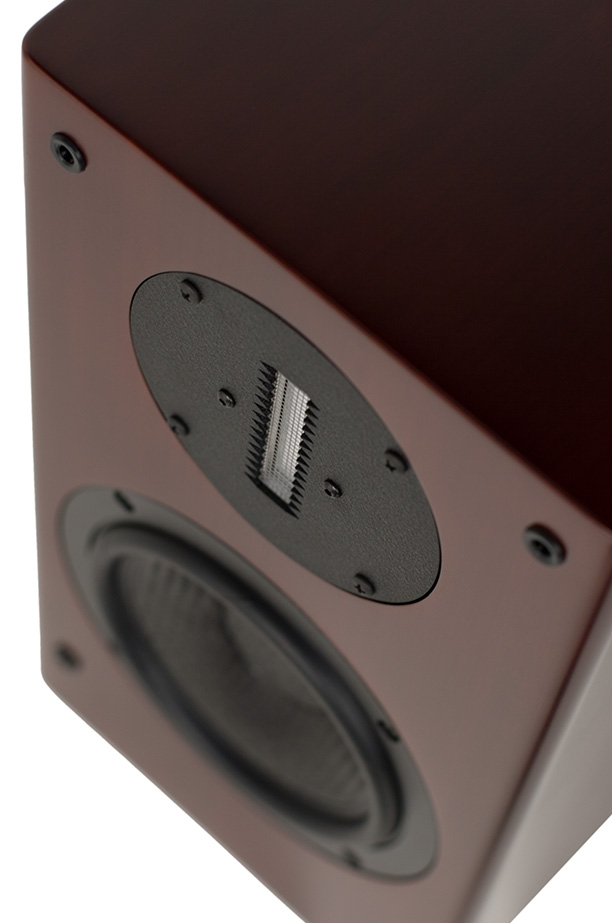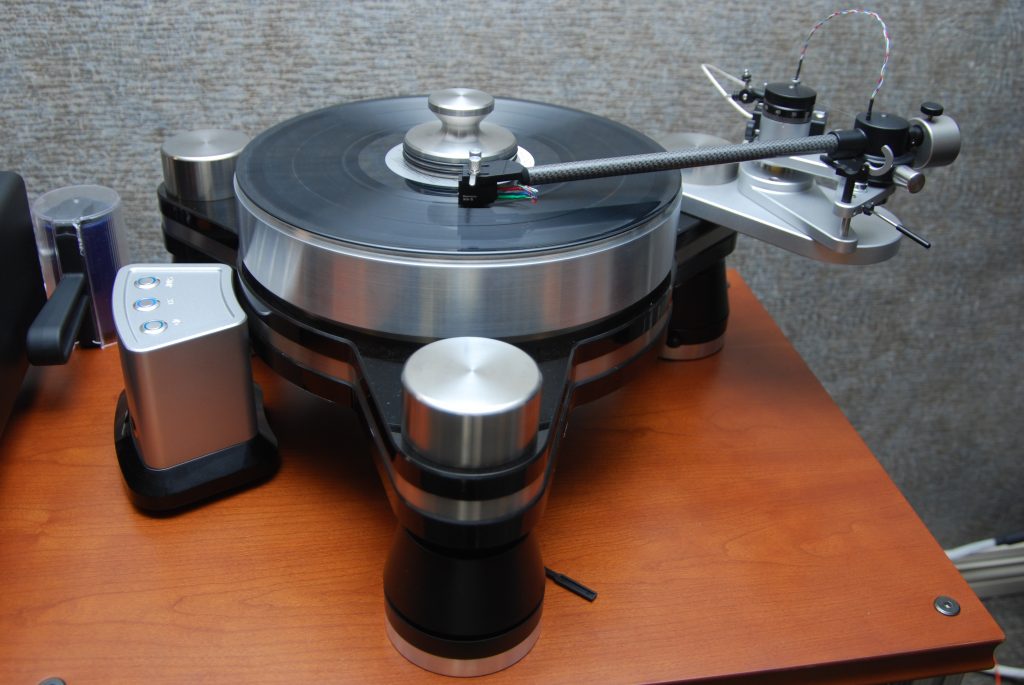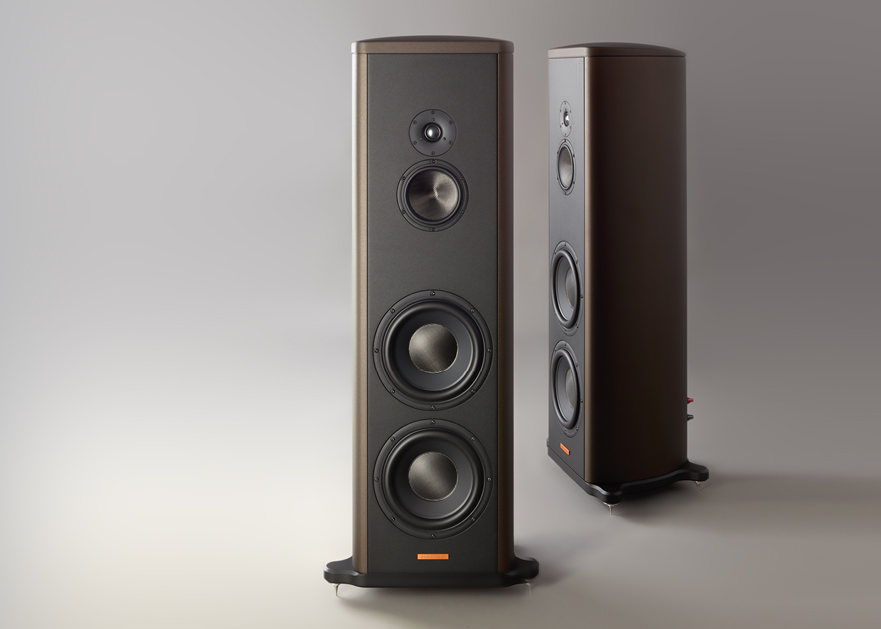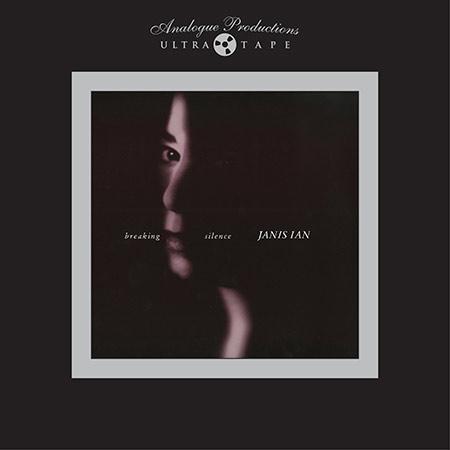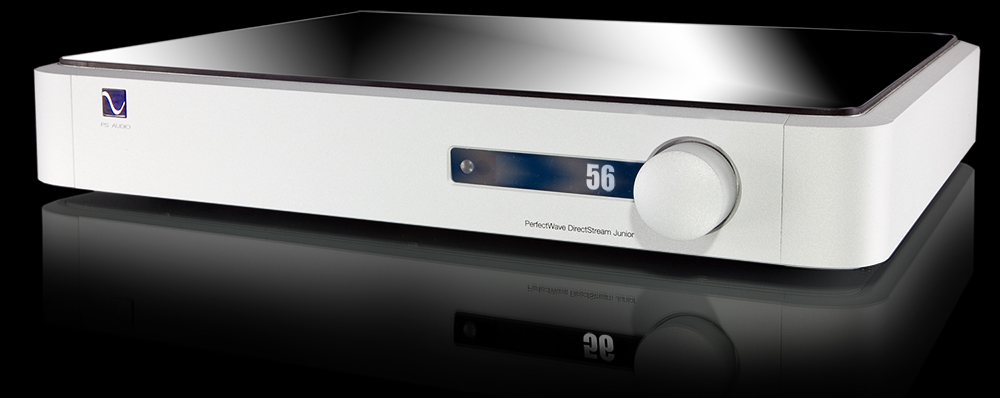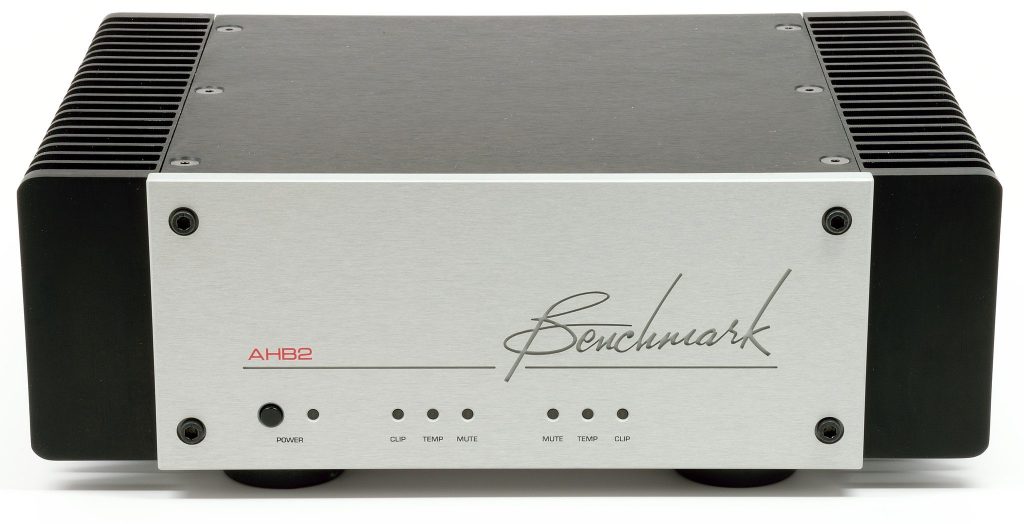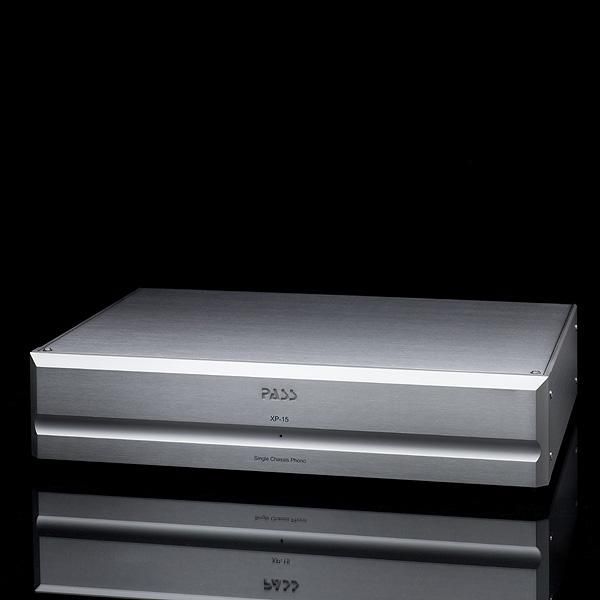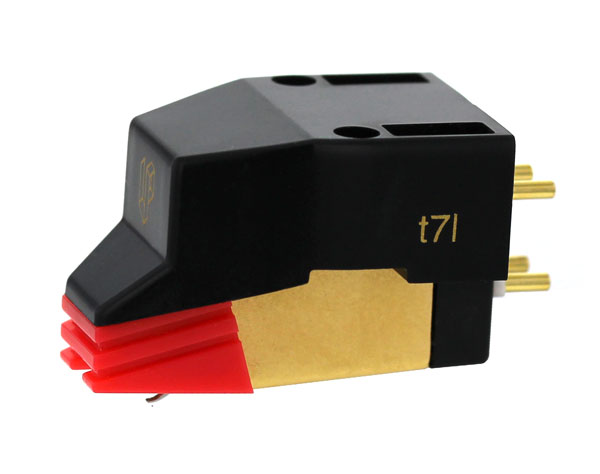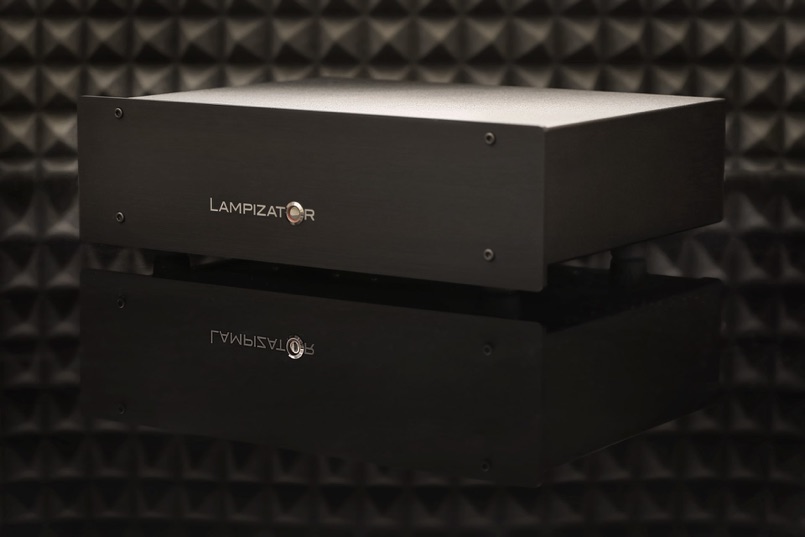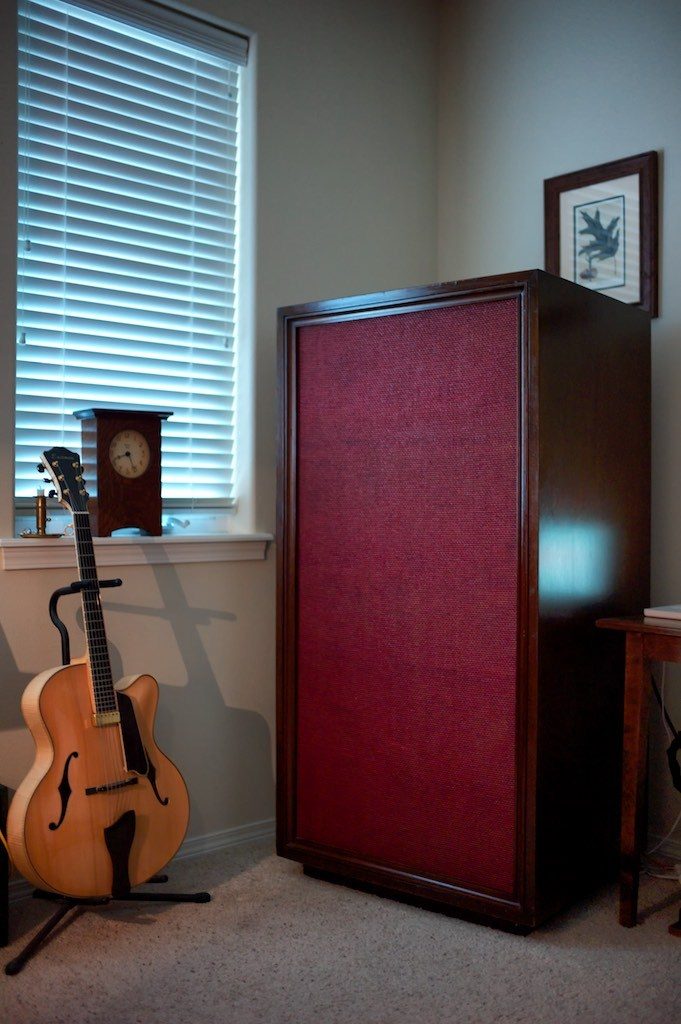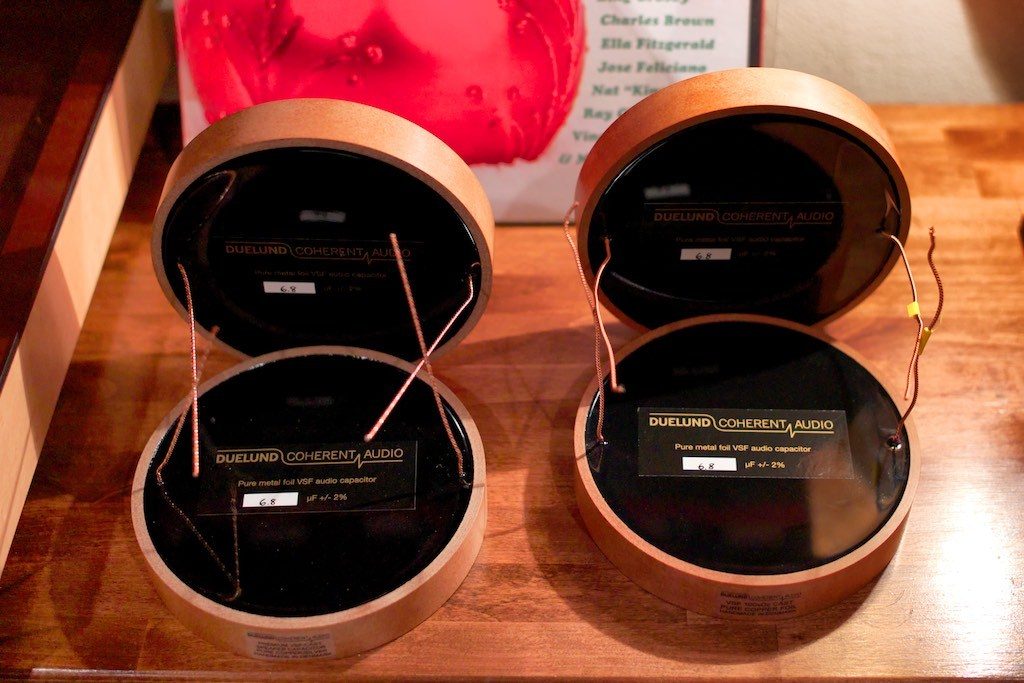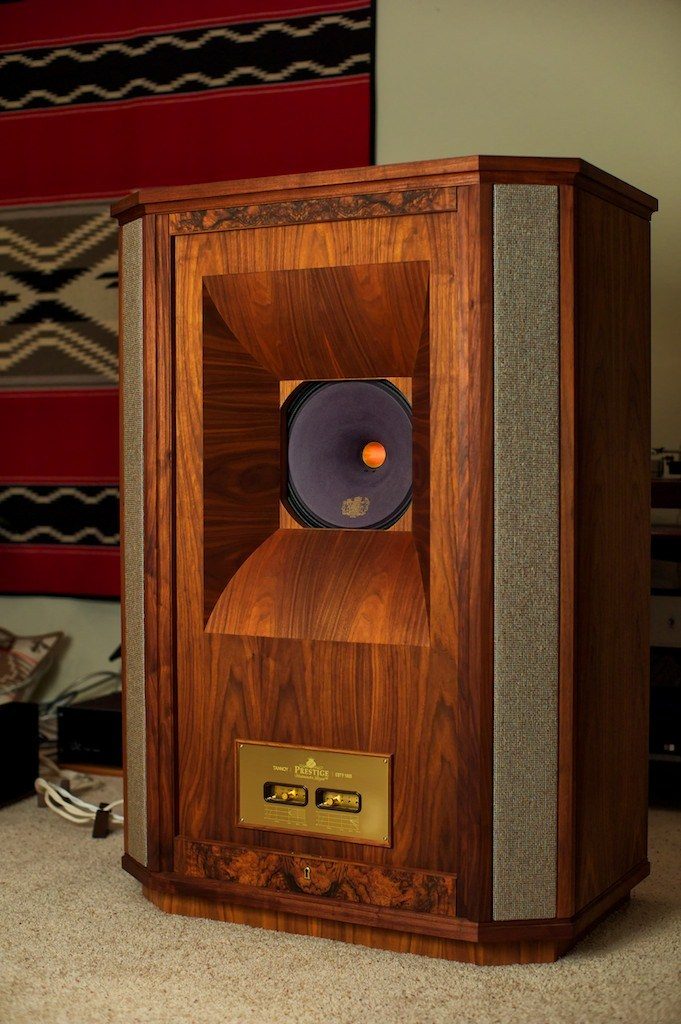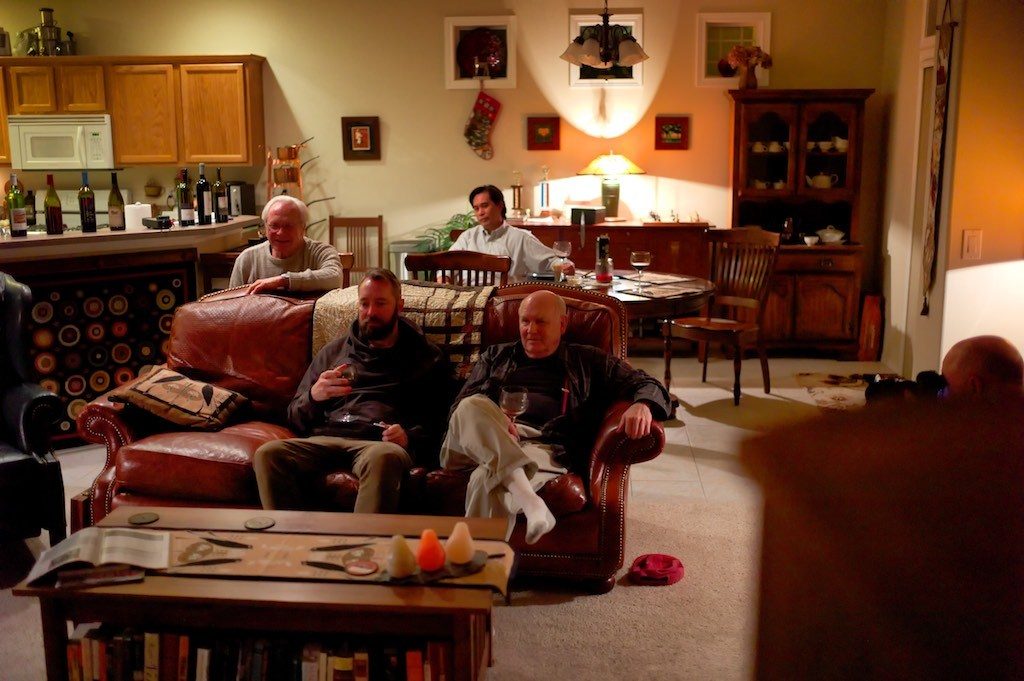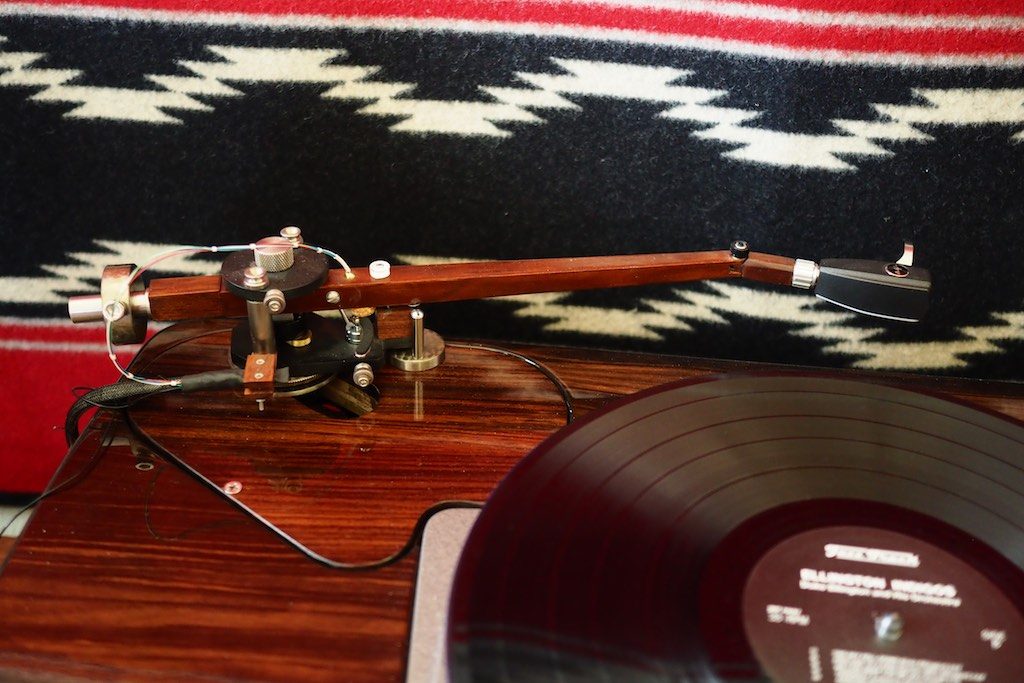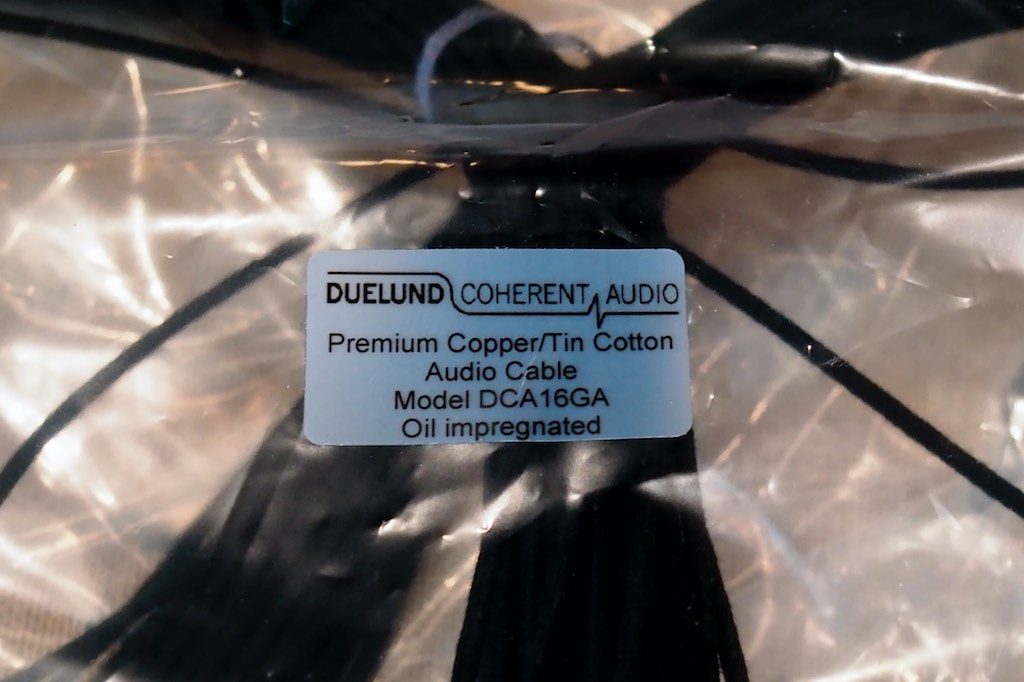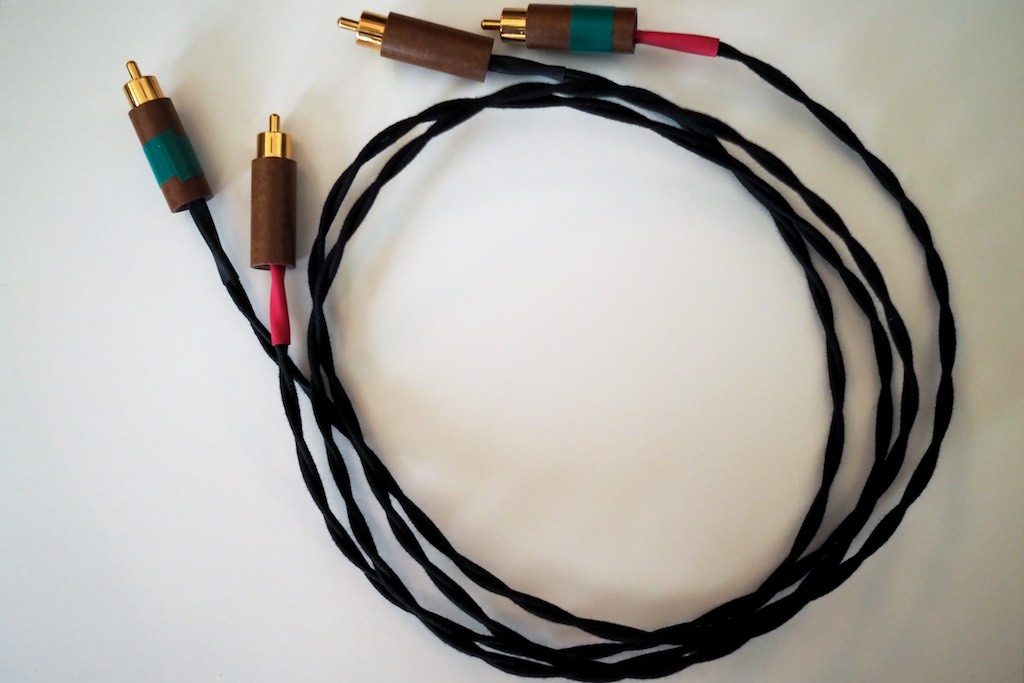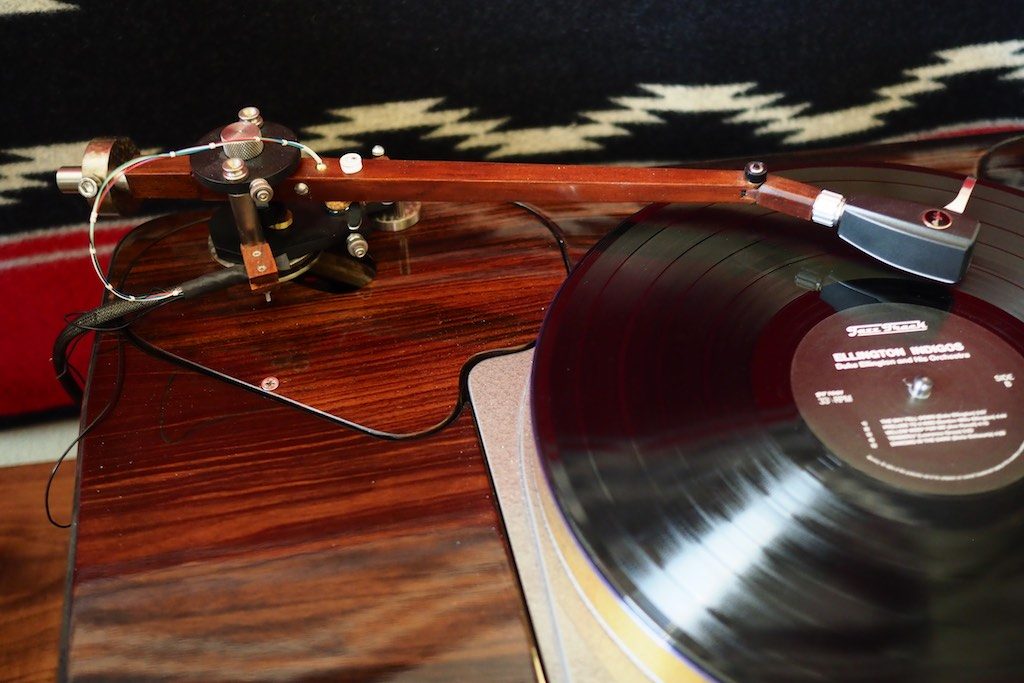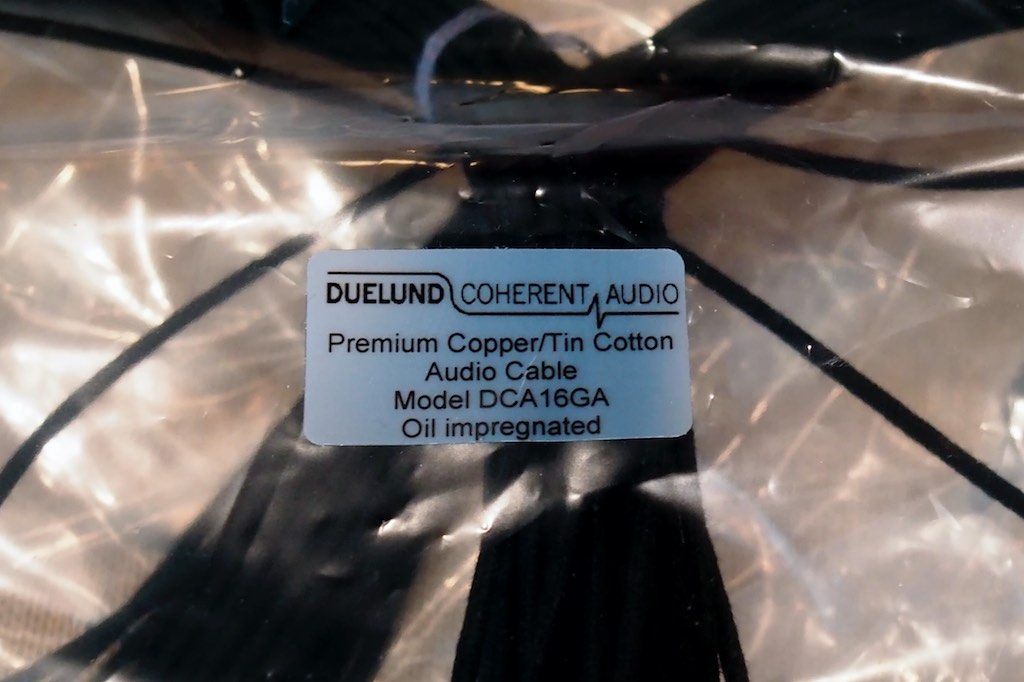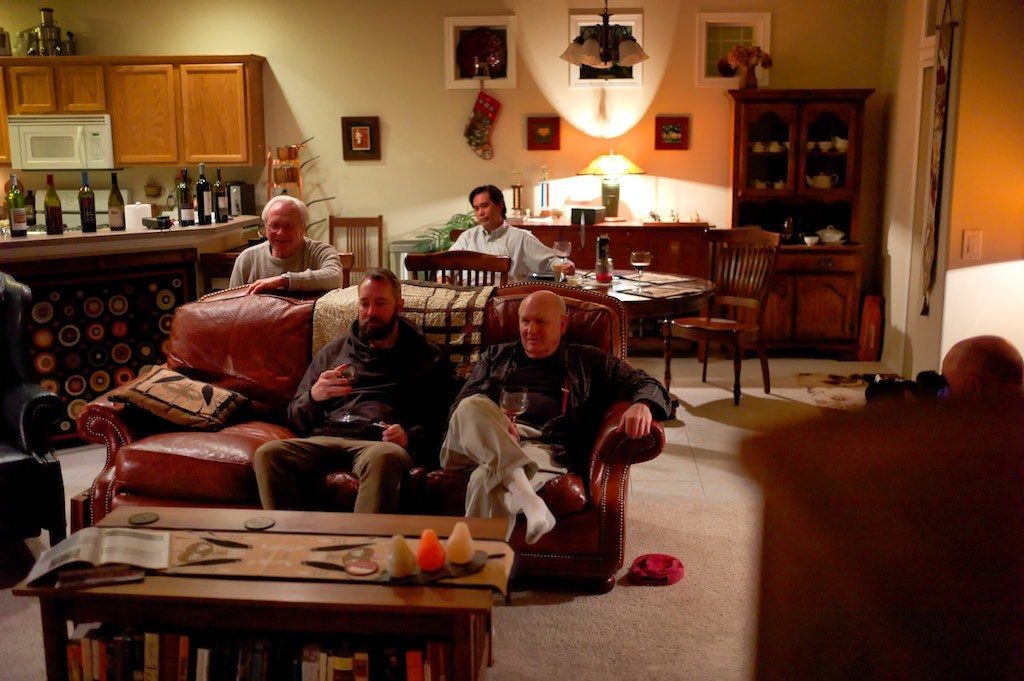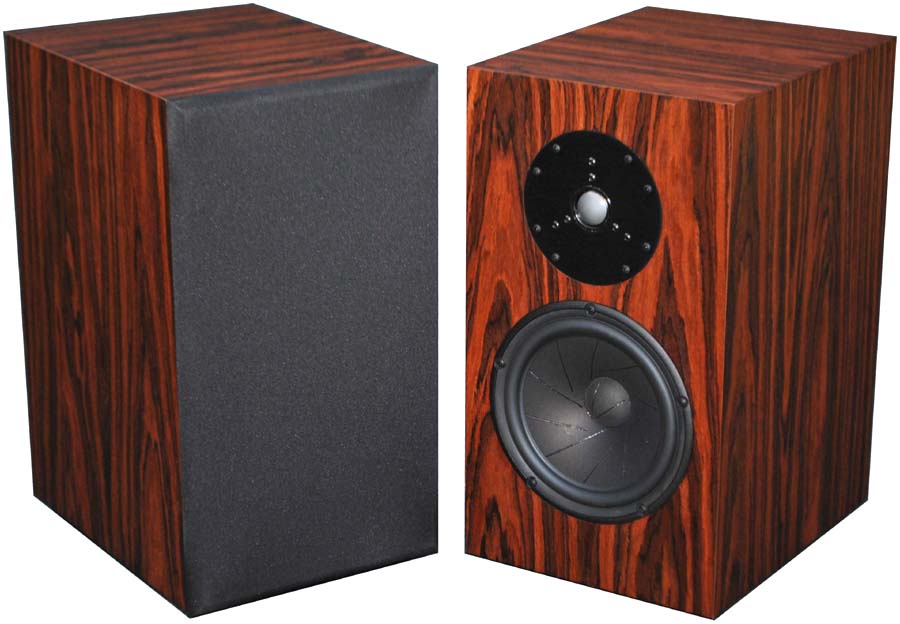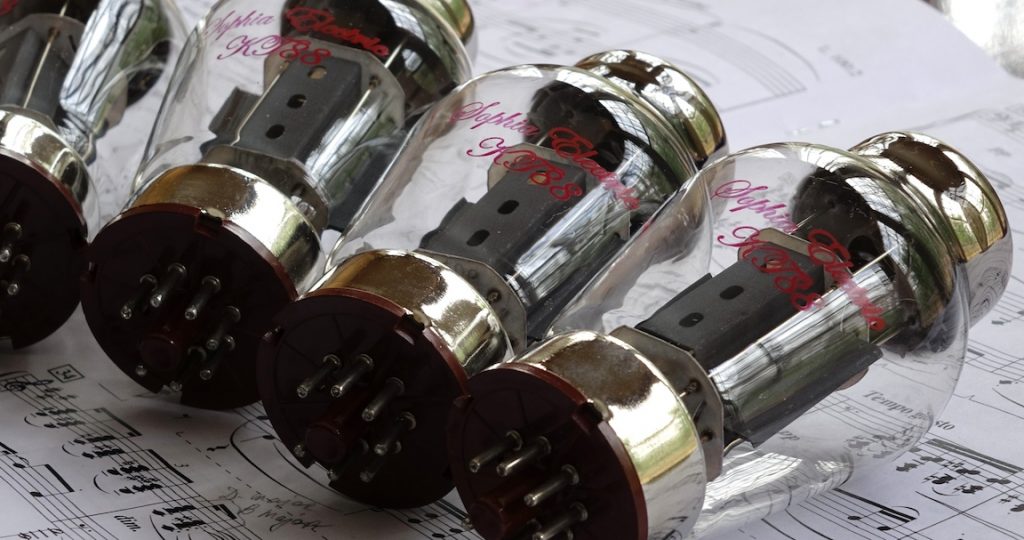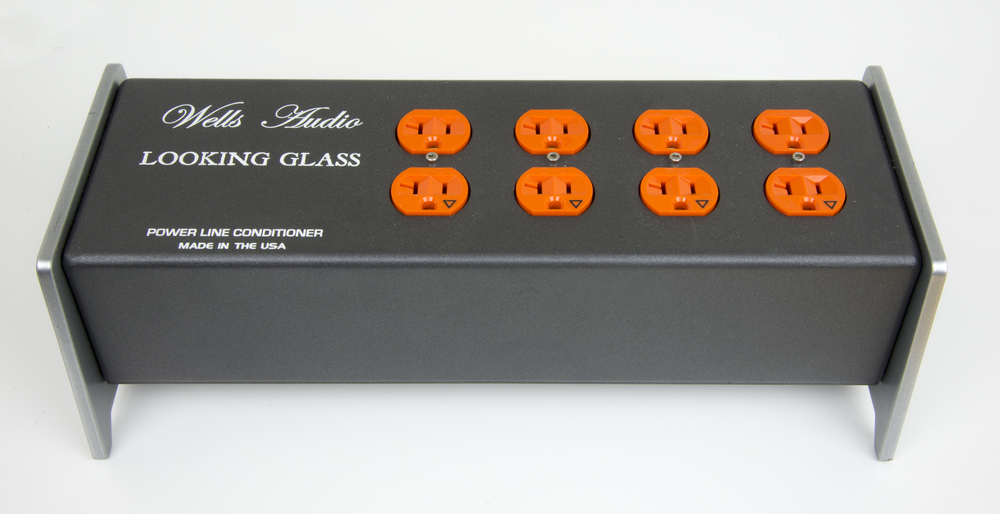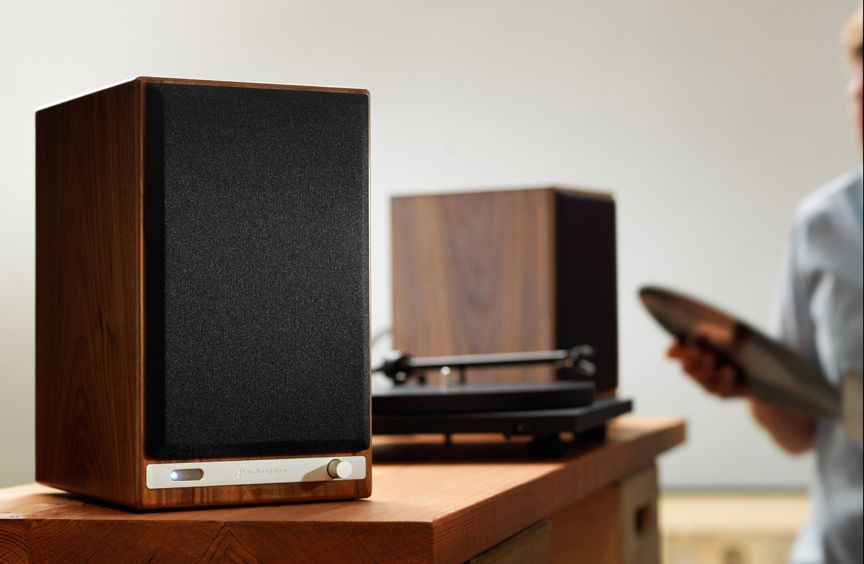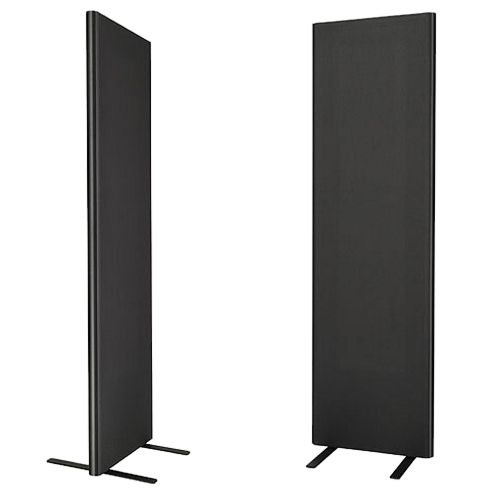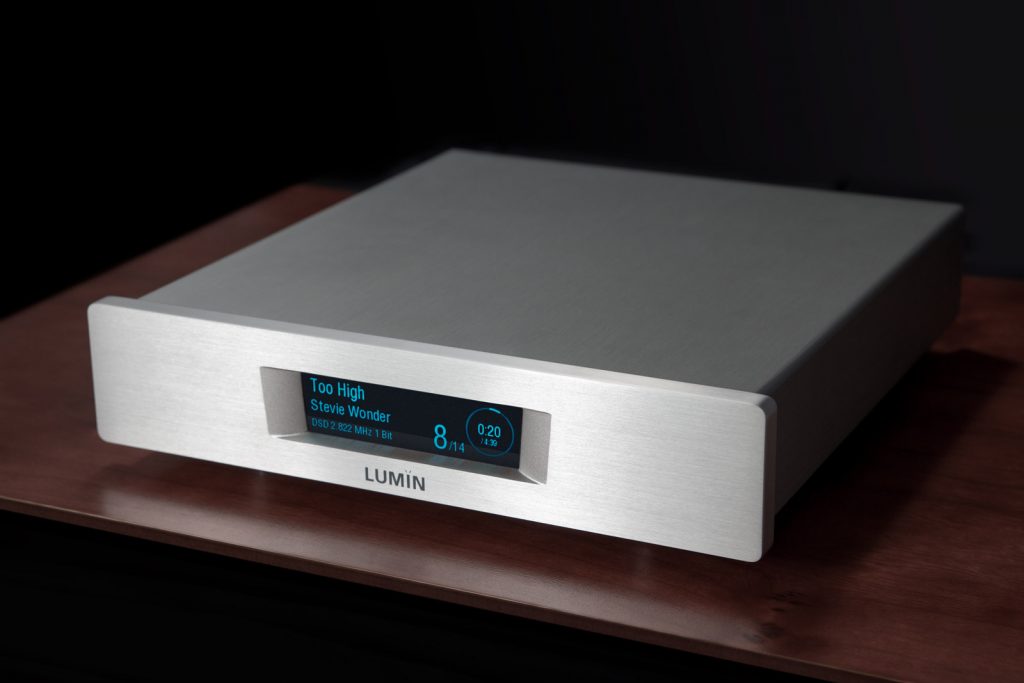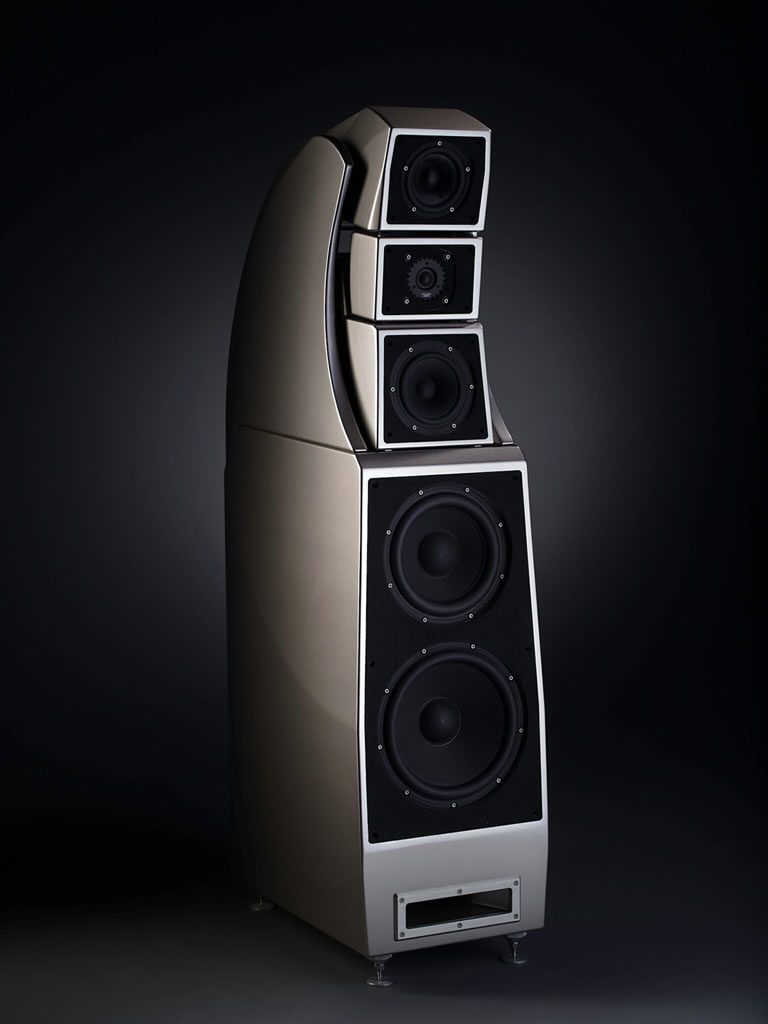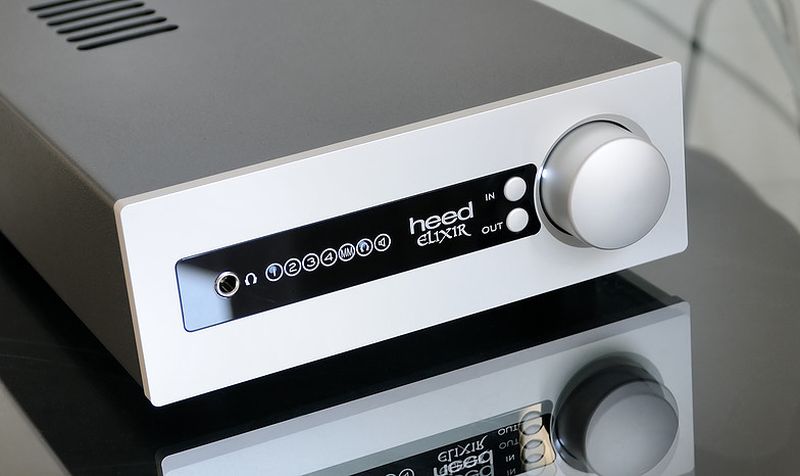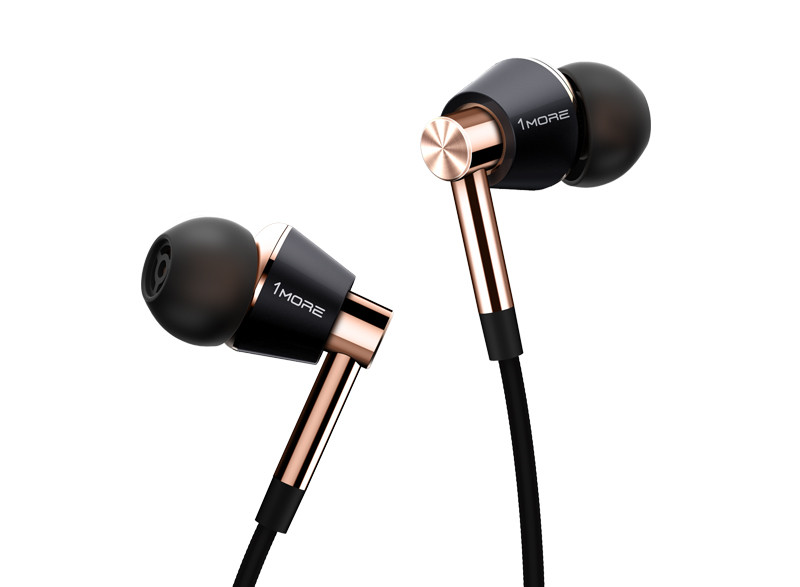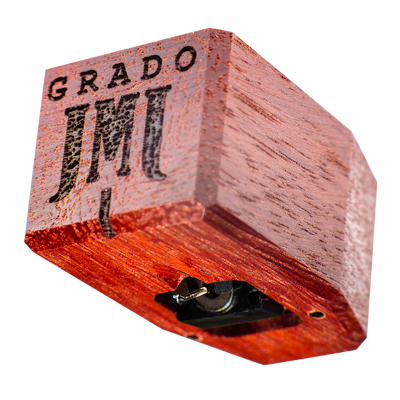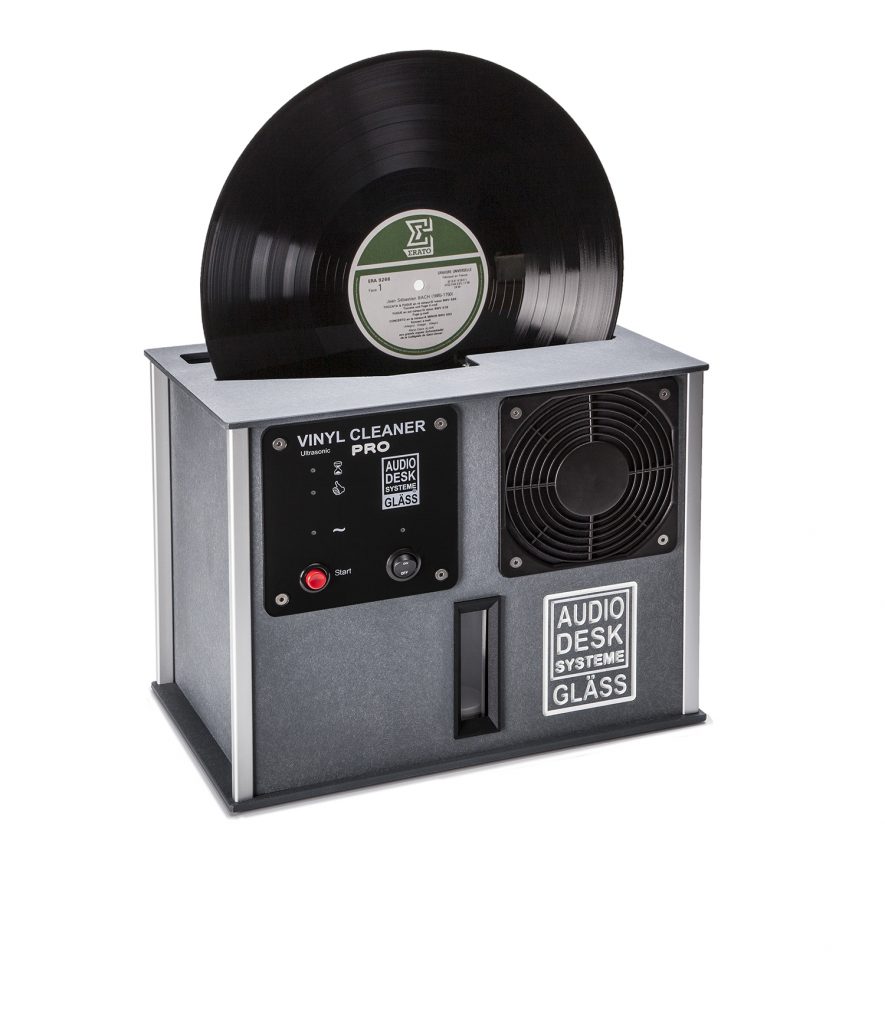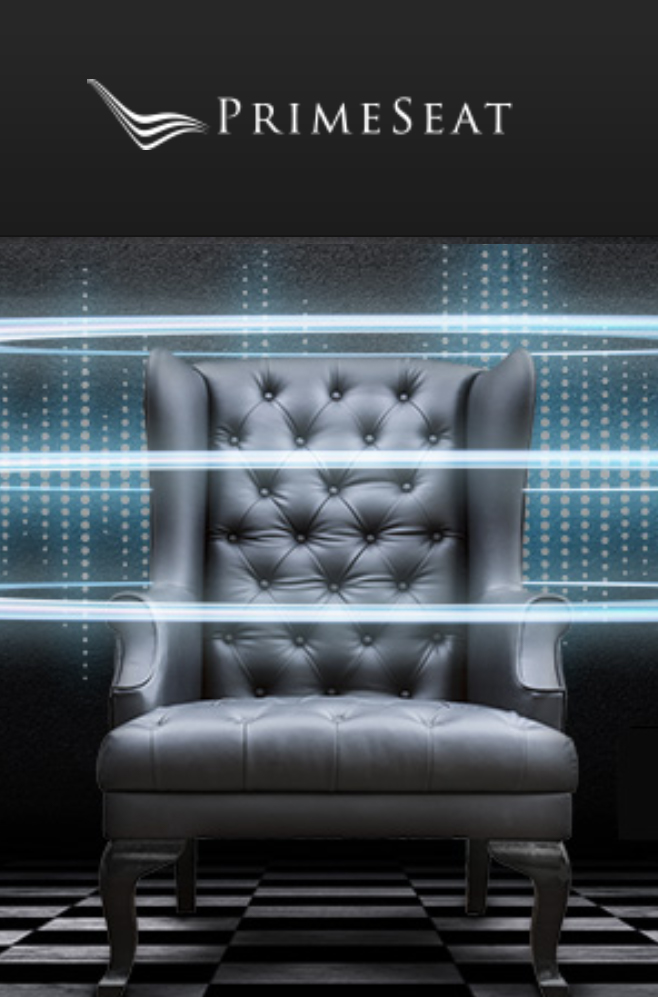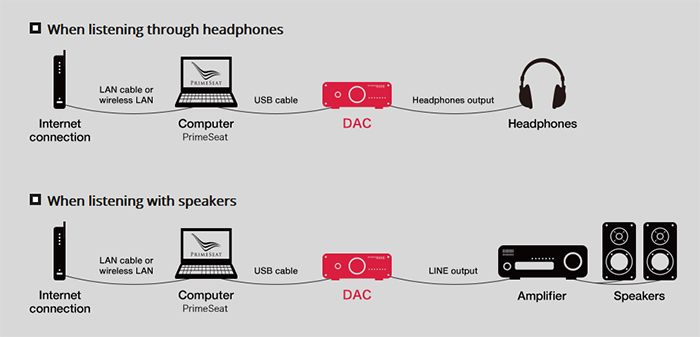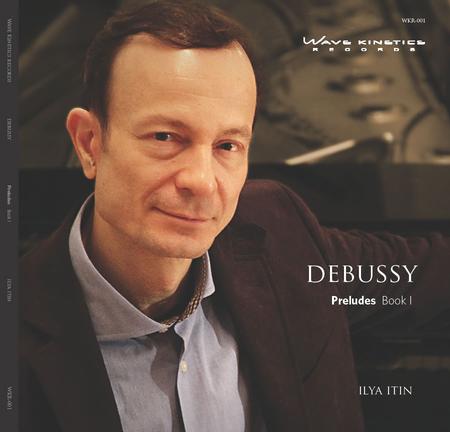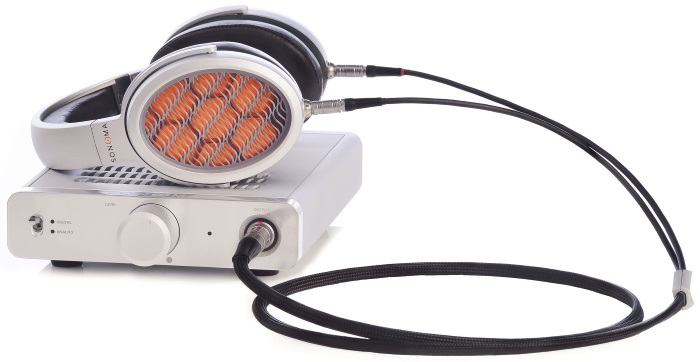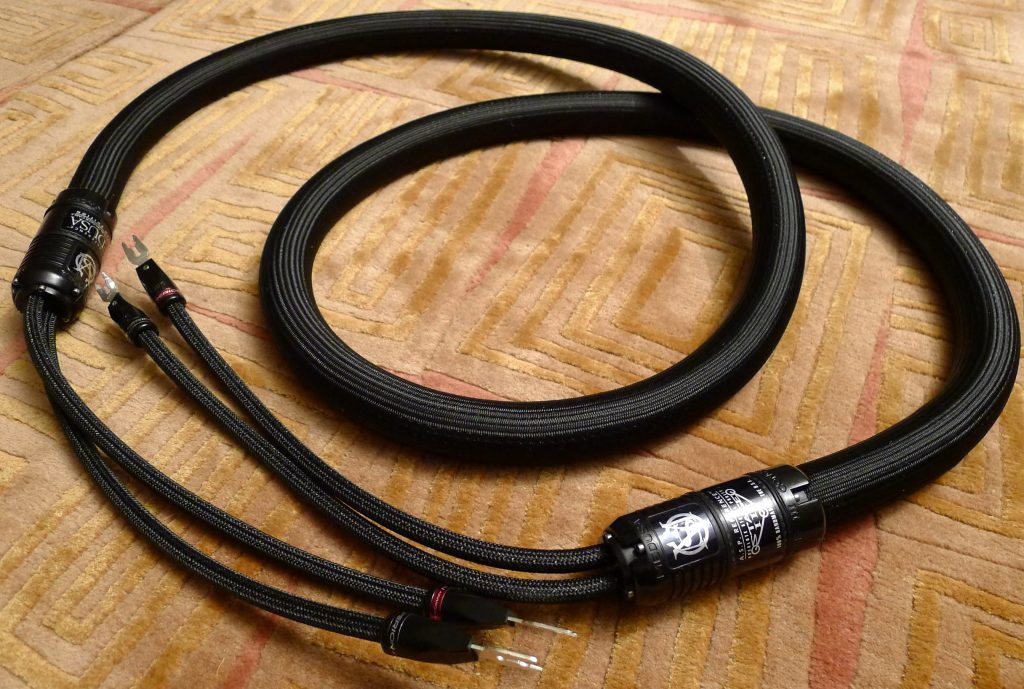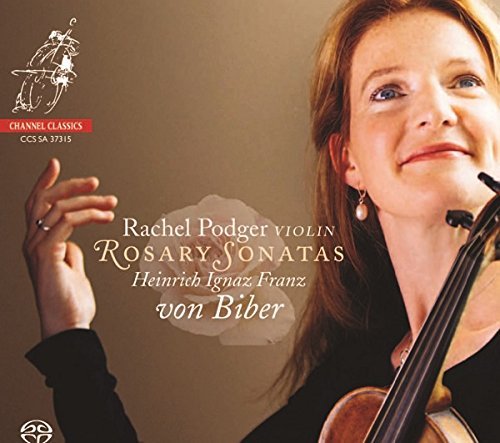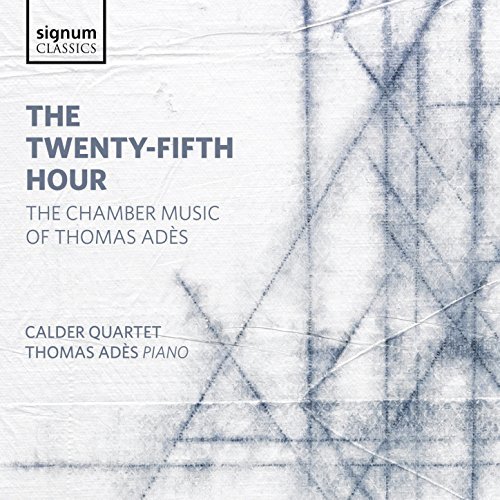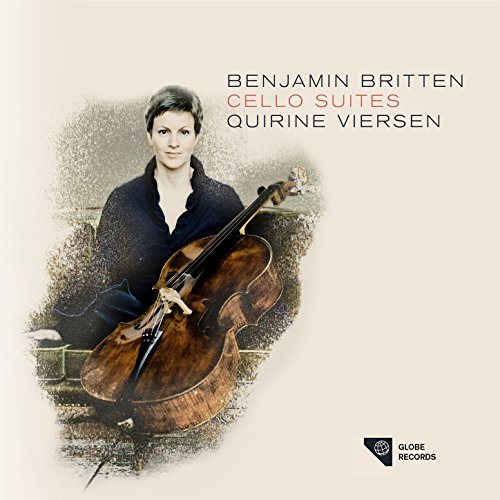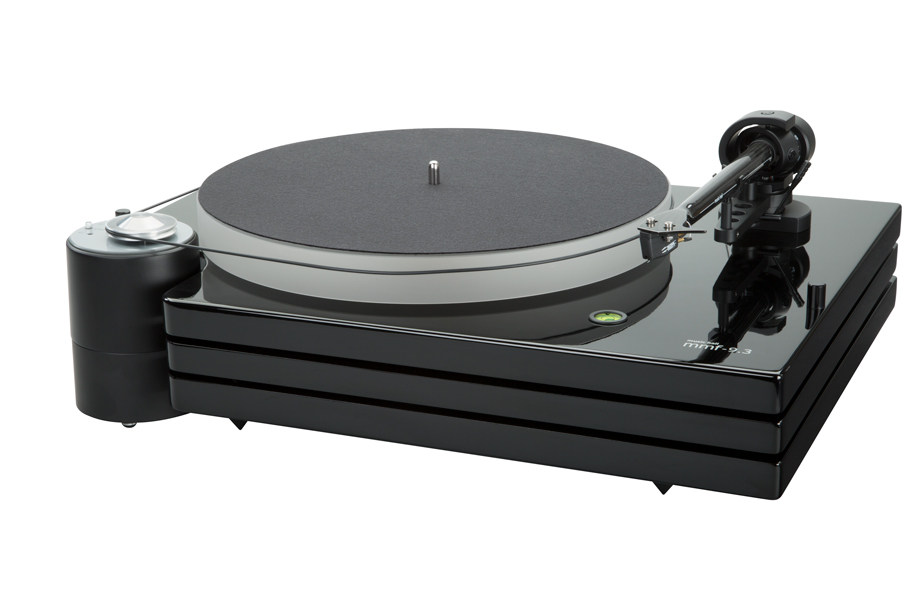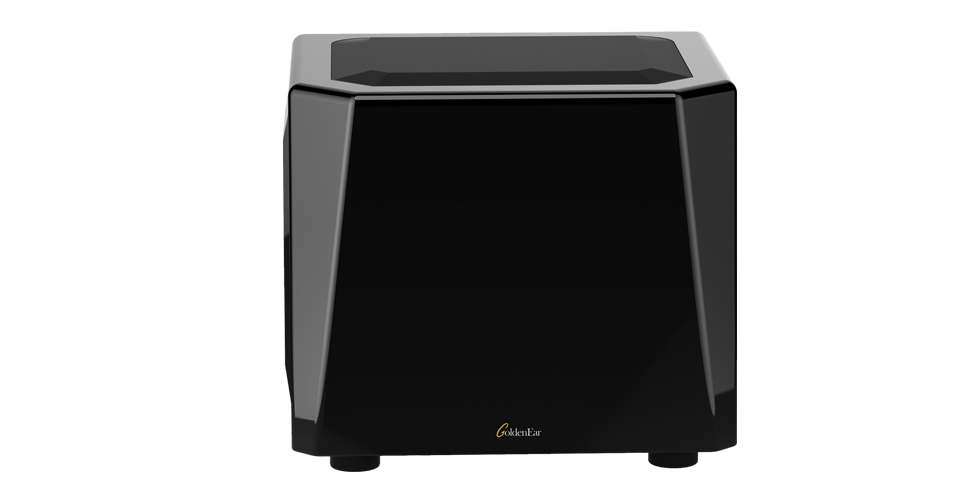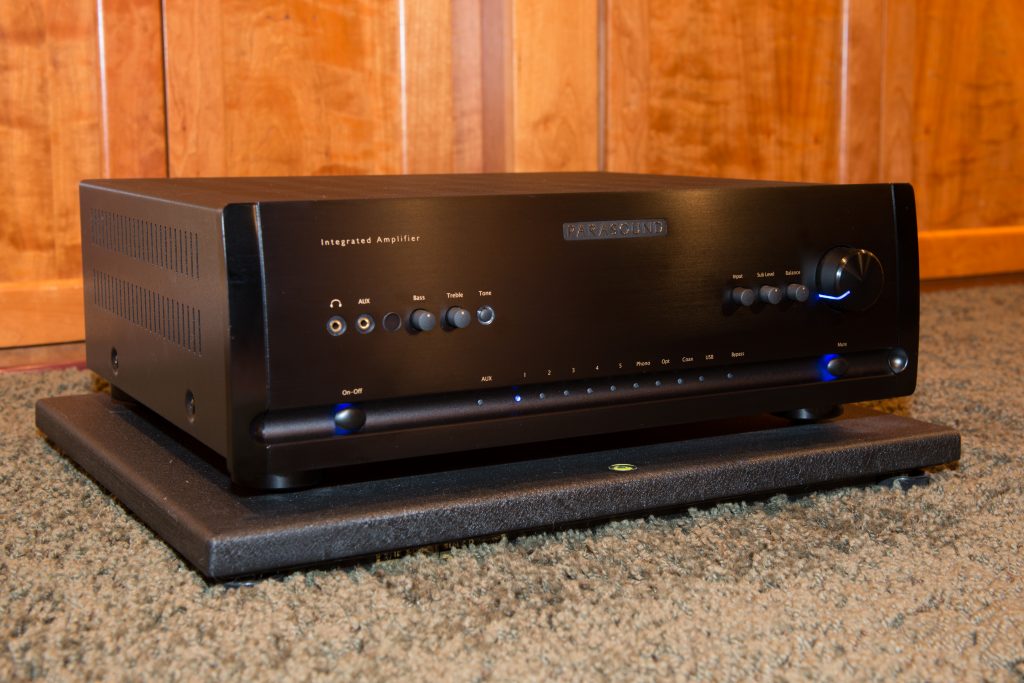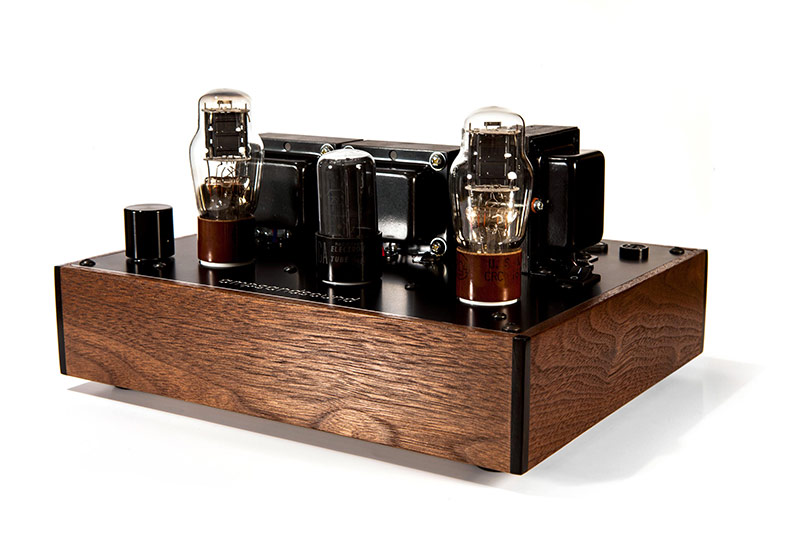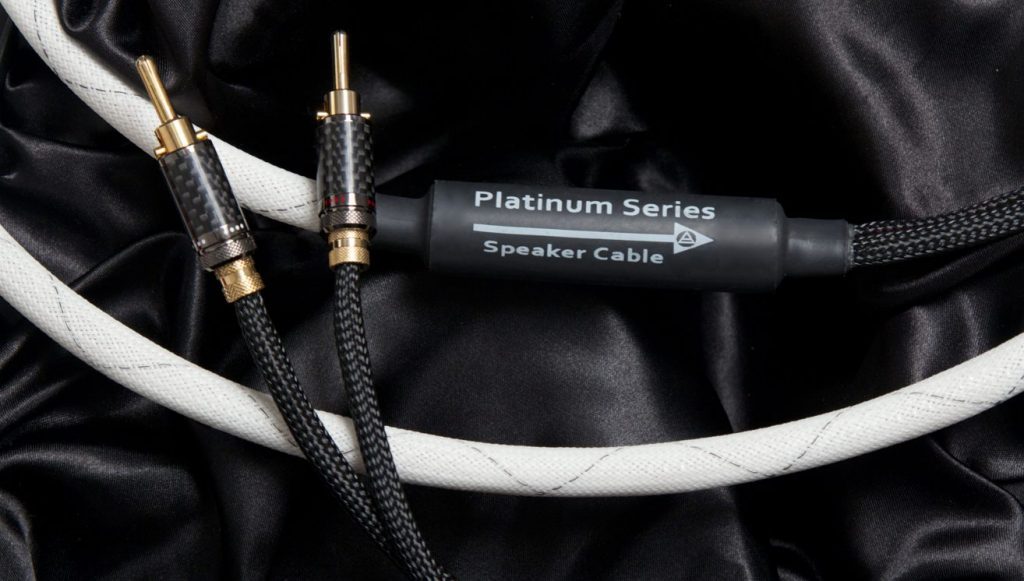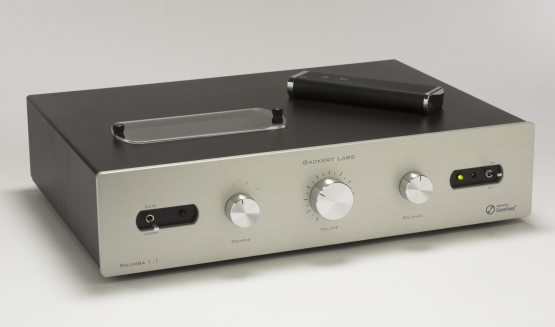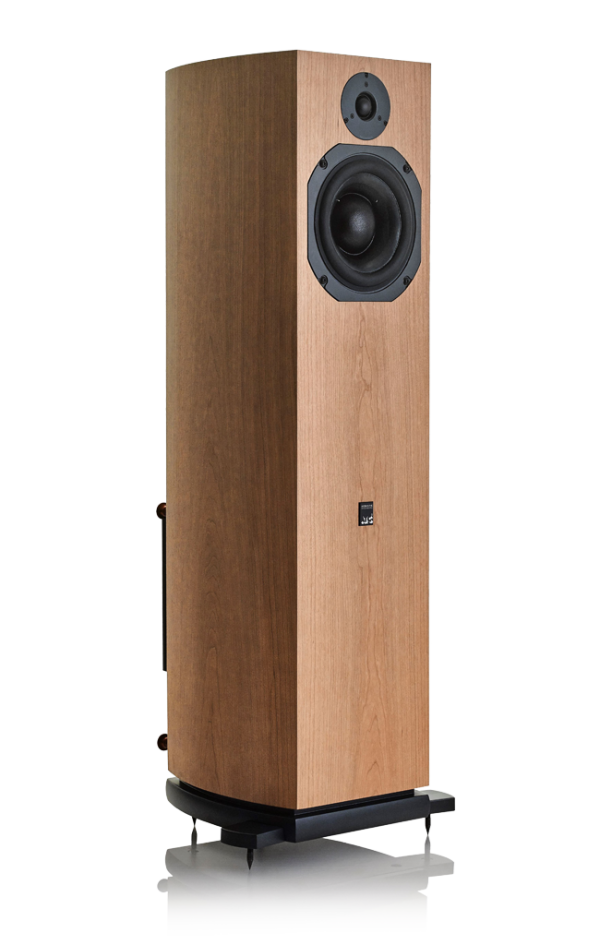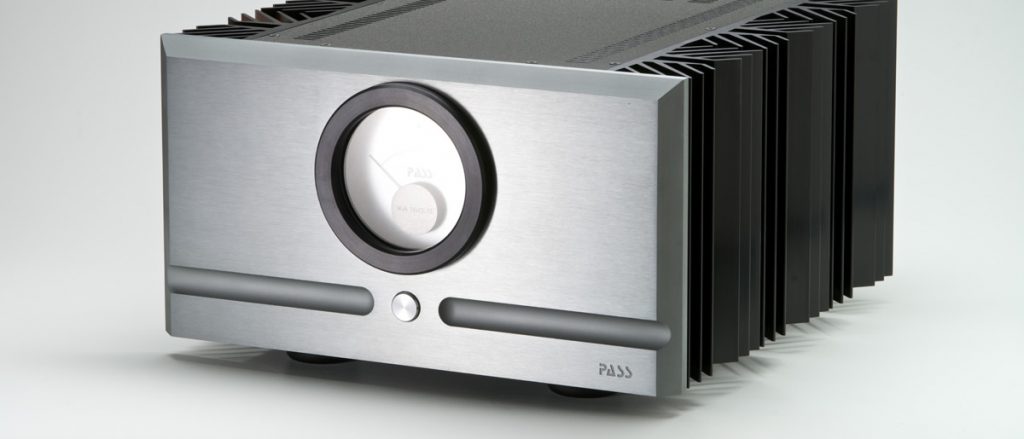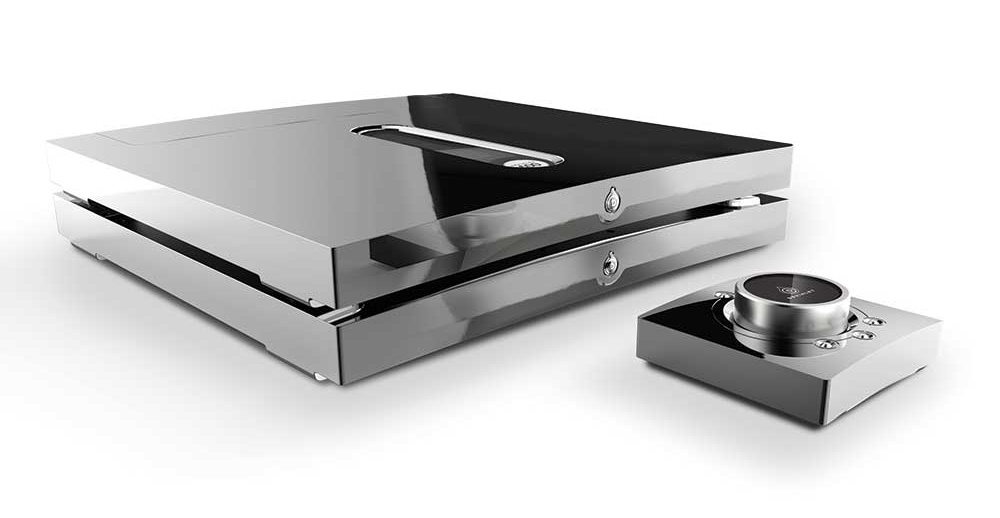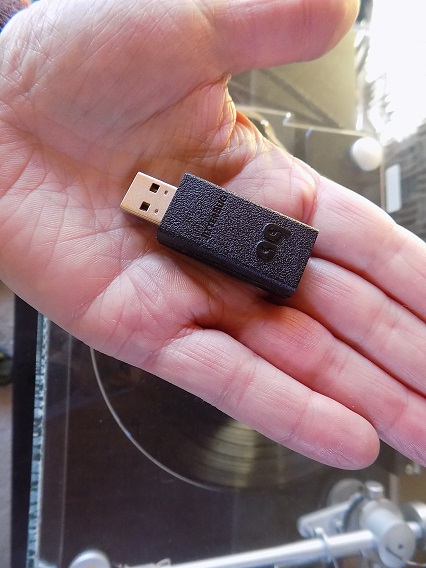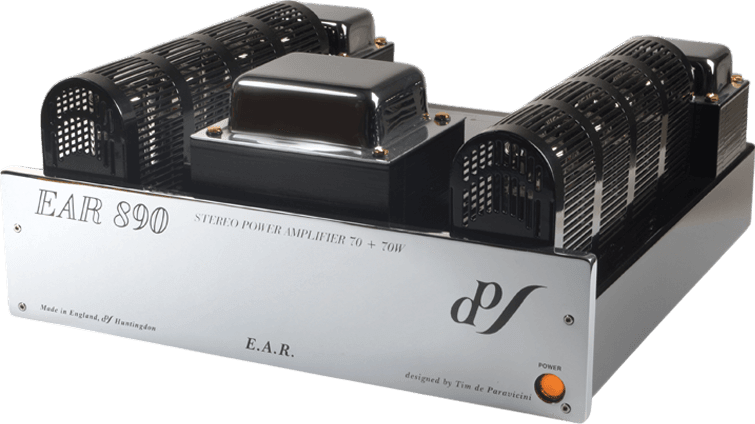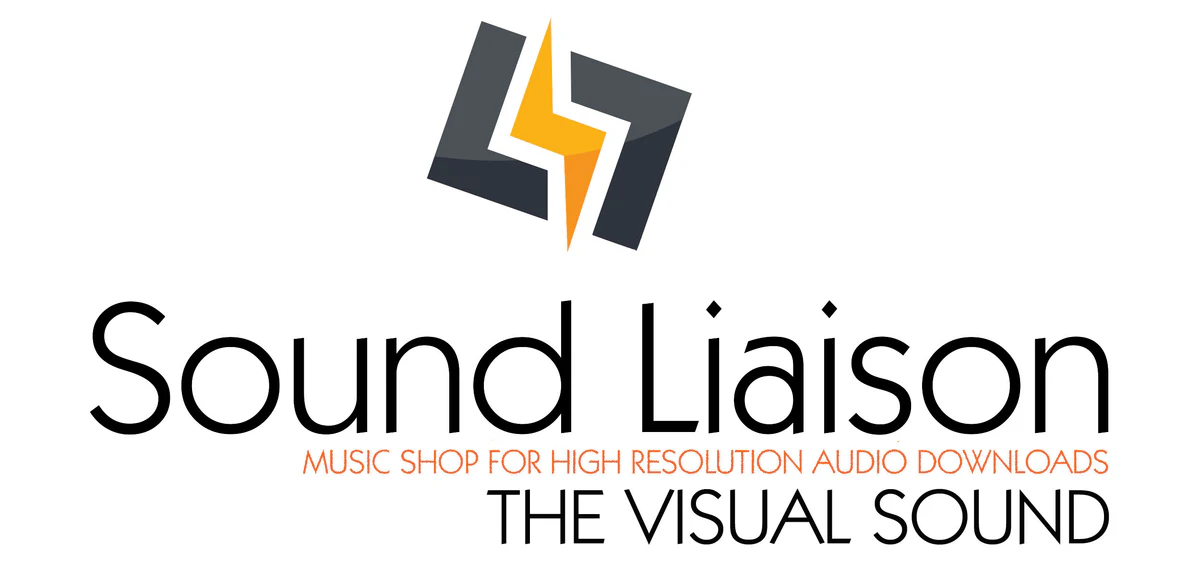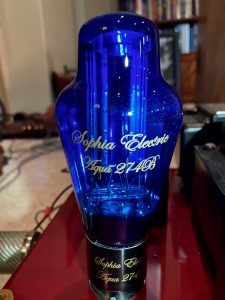Beginning at the end of 2003, PF established its first annual awards for fine audio. The Brutus Award was established for the best that David Robinson and Dave Clark had heard in their own listening rooms during that year. You can think of it as our equivalent of an "Editors' Choice" award.
The Gizmo Award, on the other hand, was established in memory of our very good audio friend, Harvey "Gizmo" Rosenberg, and is given by David Robinson to the most conspicuous audiomaniac(s) of the year. Only one Gizmo is given per year.
The following is an opportunity for our editors and writers to recognize superior merit in the audio arts though their "Writers' Choice Awards". Our writers and reviewers have been given broad leeway to cite excellence in fine audio wherever they find it: products, people, recordings, events, groups, etc., so that our readers can be better informed.
It is our hope that you will find the PF Writers' Choice Awards to be helpful to you in your audio journey.
All the best,
Positive Feedback
John Acton
Ascend Acoustics Sierra-2 Loudspeakers
Retail: $1448 a pair
My nomination for Positive Feedback's 2016 Writers' Choice Awards goes to the Ascend Acoustics Sierra-2 loudspeaker. Manufactured in the USA and sold direct to audiophiles, the Sierra-2 incorporates technology more commonly found in loudspeakers many multiples of its price, including custom RAAL ribbon tweeters, custom SEAS Curv woofers and layered bamboo cabinets. Sonically, the Sierra-2 exceeds all expectations for a speaker in its price range. The treble is sweet and extended, the midrange open and transparent, and the bass punchy and extended. Soundstaging is a strong suit of the Sierra-2, as is its ability to resolve micro-details, even at background levels. While a subwoofer is required to flesh out the lowest octave, the Sierra-2 could be all the speaker listeners in small-to-medium-sized rooms will ever need. Comes with an industry-leading seven-year warranty and a 30-day in-home audition period.
Review coming soon
Myles Astor
It was an impossible task to choose just three components—given my desire to include an outstanding reel-to-reel tape from Acoustic Sounds—for this years' Product of the Year awards. The only solution to my quandary? Petition my editors for special dispensation this year! And David R. and Dave C. both graciously granted my request. So without further ado, here are the quartet of very special products that rocked my world this year!
VPI Vanquish Direct-Drive Turntable and 12-inch 3D Tonearm
Retail: $40,000
VPI's Avenger turntable line began life 12 years ago as the "Tri-Pod" project. As designer Harry Weisfeld shared, "I wanted a table that could hold two tonearms because I wanted to play with different cartridges (or a decade later, a mono and a stereo cartridge-MA)." At that time, however, the Tri-Pod project was tabled in favor of the Classic turntable series. Recently, Harry and Mat Weisfeld had a change of heart and decided to resurrect the Tri-Pod project aka Avenger turntable line. No, the Vanquish isn't listed on VPI's website since the table is available by special order only. And yes, the wait time is worth it.
When it comes to tonearms, Harry went one step further and the Vanquish holds not two but three tonearms. More importantly, it takes, depending on the tonearm, five to fifteen minutes to mount and align the armboard and arm. But it's the direct-drive motor drive system that differentiates VPI's plinthless Vanquish table from the rest of the Avenger line. Harry opted for a plinthless design so, "the table doesn't pick up the sound in the room especially with today's speaker systems." Add to the picture new air suspension feet plus a Mike Bettinger designed power supply and we have a table that makes real inroads into narrowing the gap between the sound of 15 ips reel-to-reel tape and vinyl.
The most striking aspect of the sound of Vanquish direct-drive table lies in its timing and lack of smearing, particularly like tape in the lowest octave. Lower octaves—and on up—are amazingly transparent. The Vanquish possesses on the best recordings and with the best cartridges (for example the new Atlas SL) an unlimited and massive soundstage. Switch over from VPI's 3D arm to Marc Gomez's amazing sounding Swedish Analog Technologies (SAT) tonearm (sporting either the standard Atlas or the Ortofon MC A95 moving coil cartridges) and the music takes on an incredible, tape-like solidity, naturalness and eminently visceral feeling midrange. The Vanquish might just be—in contrast to what we said back in the '80s—your very last turntable.
Review coming soon...
Magico S5 Mk. 2 Loudspeakers
Retail: Standard finish $39,000
When all's said and done, the only resemblance between the new S5 Mk. 2 and older Mk. 1 versions (that I enthusiastically reviewed) is their shape. And even there the S5 Mk. 2 version uses newly developed, rounded end caps to break-up vertical standing waves within the cabinet. The latest Magico S5 Mk. 2 features a new nanographene midrange driver that is 20% lighter and 300% stiffer than the S5 Mk. 1's original 6-inch driver. A new 1-inch Be/diamond coated tweeter. A new, lower slung, lower center-of-gravity, 4-point base for the speaker cabinet. New 10-inch bass drivers replete with nanographene dust caps. Maybe most importantly, the introduction of the midrange driver sub-enclosure originally developed for S1 and S3 Mk. 1 model speakers.
Sonically, the biggest difference between the two speakers lies is the midrange. Yes, the speaker is quieter, cleaner and more resolving than the earlier version; most significantly, though, the midrange now better matches the transparency of the upper and lower octaves. The low end is tighter and more detailed, yet has an uncanny ability to capture the sound of say cellos or basses. The upper octaves are smoother, less brash and more linear. There's a marked improvement in the speaker's ability to focus that center image. The S5 Mk. 2 might very well be the sweet spot in the Magico speaker line providing a bit of the flavor of Magico's more expensive M3s without quite the level of the new M3's refinement and quietness.
Read more HERE
Ortofon MC A95 Moving Coil Cartridge
Retail: $6500
Once upon a time there was a moving coil cartridge that began life as an ugly duckling and ended up being unquestionably the best $6500 moving coil cartridge that's come my way! The Ortofon MC A95 gives the big boys a real run for their money for roughly one-half to one-third the asking price of today's super cartridges. A couple of caveats are, however, in order first. It's crucial given MC A95's low 0.2 mV output that one has a quiet phonostage (or SUT) with ample gain. Then check that your arm has the appropriate counterweights to deal with a very light, 6 gram, cartridge. Next, give the cartridge 100 hours to break-in. Finally, the MC 95 is not as finicky as some would have you believe to set-up but attention to detail always pays dividends.
The payoff? The MC A95 excelled in both the VPI 12-inch 3D and Swedish Analog Technologies (SAT) tonearms. Outstanding dynamics and bass impact. Exceedingly neutral and resolving without losing that precious midrange in the process. Quietness, transparency, speed and low end up ranking up there with the best moving coils. Where the MC A95 falls somewhat short of ultimate lie in the areas of a slightly smaller soundstage, palpability of musical images and harmonic completeness. Yes, the MC A95 is perhaps a touch warmer and more solid set-up in the SAT than the VPI arm. Highly recommended!
Read more HERE
Janis Ian, Breaking Silence, 15-ips, 2 track, reel-to-reel tape
Retail: $450
Acoustic Sounds (and owner Chad Kassem) announced earlier this year that after years of customer and tapehead requests they would finally enter the 15-ips, two track, reel-to reel tape market. This initial set of twelve titles were carefully selected and based largely upon Acoustic Sound's best selling titles. Among the new titles announced included four classical and highly sought out RCA Living Stereo releases (The Pines of Rome, Lt. Kije, Scheherazade, The Power of the Orchestra) as well as music from Hugh Masekela and Rickie Lee Jones!
And Chad came out of the gate with two blockbuster titles including Ben Webster's Gentle Giant (those with turntables should check out the newly released 45 rpm version of this Ben Webster classic) and Janis Ian's Breaking Silence, the winner of this year's software award. The songs on the almost 25 year old Breaking Silence are as fresh today as the day they were penned in the early '90s. Now some may find the subjects on this album such as The Holocaust, domestic violence and child abuse, for instance, a little bit of a downer. But bear in mind while listening to Breaking Silence that Janis' roots lie with folk-rock school of music. Her music represents—not unlike her first hit "Society's Child" that dealt with the subject of interracial romance and written at the tender young age of 14 (and at a time when the Supreme Court had yet to rule on its "legality")—a self proclaimed, painfully honest, diary of her life's journey.
Sonically, the recording is noted for its simplicity. This simplicity as it turns out according to Janis' autobiography Society's Child: My Autobiography, wasn't exactly planned. No American label would offer Janis a record deal so she and her partner were forced to take out a second mortgage to finance the recording of Breaking Silence. So Breaking Silence's simplicity wasn't planned but resulted from having to record on a shoestring. Most of all, the tape really brings out the purity of Janis' soprano voice (especially "Some People's Lives" that was recorded direct-to-two track on the the B Reel) and Dan Huff's guitar work!
All tapeheads better budget accordingly for all the rest of this tape series. Not to be missed!
Read more HERE
Gary L. Beard
I've struggled with this year's awards for one simple reason. Every piece of gear I've had in my listening room in 2016 has warranted special mention, including two fine pieces whose reviews are slated to appear in the cyber-pages of PF yet this year. I know, I know; cop out, right? No, not really. Expensive audio gear should sound good, shouldn't it? And it generally does.
Whilst trying to figure out the best way to approach my dilemma, I decided to exclude gear from the unpublished reviews, and instead give awards to the products which exemplified themselves as the best high-end sound I've heard this year—irrespective of minor gripes, or whether they'd been given awards in previous years by other writers. That left me with three excellent choices, in totally different categories of audio. While certainly expensive, these superb audio products fall within the lower-tier of pricing for high-end, high-fidelity audio. To get significantly superior sound may cost a whole lot more.
PS Audio's DirectStream Junior DAC
Retail: $3999
New in 2016, and now my personal reference, the DSJ is an amazing performer. With PS Audio's Ted Smith and Dennis Kerrisk around to keep Junior in line with evolving firmware upgrades, this fine DAC keeps getting better and better.
Read more HERE
Benchmark Audio's AHB2 Power Amplifier
Retail: $2995
While my narrative centered on the symbiotic relationship between the AHB2 and Benchmark's excellent DAC2 HGC digital converter; and I openly opined for unbalanced inputs on the amp, the AHB2 is quite a sonic achievement. It could well be the last amp you'll ever own. Yes, it is that good.
Read more HERE
Pass Labs XP-15 Phono Preamplifier
Retail: $3800
What else can I say that is not in the review? To say I am impressed with the sound of this phono stage would be an understatement. Mark up yet another award for this venerable audio product from Pass Labs.
Read more HERE
Victor Chavira
LP Gear The Vessel A3SV Cartridge
Retail: $260
My selection for this year's Writers' Choice Awards goes to LP Gear's The Vessel A3SV moving magnet phono cartridge. The A3SV provided musical enjoyment far beyond its modest price. If our collective quest is to be closer to the musical event, then the A3SV is an ideal medium. The A3SV perforated a fine veil and opened a new dimension of depth and musical expression within my record collection. Even now, after having been installed several months ago, the A3SV continues to impress with its ability to ignore surface flaws and reveal previously masked musical details.
Read more HERE
Larry Cox
Fidelizer
I did not write a review of this software, but mentioned it as a welcome bonus in my sole hardware review this year. Fidelizer is said to optimize Windows OS to reduce non-audio CPU tasks. Offered in three levels: "Fidelizer Pro" for $69.95 which is said to render a Windows computer unreliable for normal Windows processes; "Fidelizer Plus" allows normal processes to continue reliably, but they may operate a bit slower; and the "free" iteration. The free iteration gets my praise.
Sonically, the sound is more composed and the emotion underlying music becomes more sensible. In listening to music, it feels like I've just finished a music theory and practices class. What is going on musically seems more evident, more clearly and effortlessly communicated. I have found I like my digital music collection a bit better. Super recommended in any iteration.
Read more HERE
HQPlayer
This is a wonderful music player available for Windows at about $143, depending on the currency conversion. It's also available in Linux and OSX, with a discount for a second OS. I found it superior to JRiver Music Center. HQPlayer allowed my DSD only DAC to play PCM as well as DSD files. There are so many permutations to what HQPlayer can do, I'm not even going to try here. Perfect? No, but very, very good. Consider an Intel Skylake i7 processor the entry level performance to perform multi-DSD transcoding of PCM files. I was able to get my Mac Mini i5 1.4GHz to do single DSD, but multi-DSD takes the performance to a higher level and my Mac stuttered like a hypothermic school boy. Hearing HQPLayer transcode music to DSD prompted a friend to say, "I wish my brother (an audiophile) could hear this!" I agree, sound is extraordinary. The software has so many permutations that I cannot even begin to suggest what settings to do what.
Not perfect software. The GUI and user features don't match the quality of the sound. Many say that HQPlayer integrates well with Roon. I have not tried Roon yet, so if you're on that train, the ride is supposed to be very good. Some, including me, have had issues with scrambled libraries, but the performance makes that somewhat tolerable.
In a nutshell I experienced an addictive and exceptional sense of "you are there" with my $2150 DAC. For those that doubt a music player can make a difference, you owe it to yourself to give HQPlayer a try. Thirty day trials are available, but within a few minutes you should know whether you can hear a difference—I found it rather dramatic—which leads to the question whether it's worth it to you. I found it very worthwhile.
Read more HERE
LampizatOr Euphoria DAC
Retail: $2150
Loved it. Bought it. Recommend it.
Here are my nits: This is a DSD only DAC. You'll need either 1) DSD source files (for me, this means choosing music or performances that allow me to hear the format without rejoicing in the artistry or performances); or 2) transcode PCM recordings to DSD for the Euphoria to play. The latter requires some decent computing power; my advice is start with an Intel Skylake i7 processor.
Here's my praise: By far the lowest priced DAC I'm aware of that has neither a digital nor an analog sound, rather a sound better compared to live music. Think great clarity without being analytical. Think fine detail without etch or a thinning of timbre. Reproduction with a light touch, but not a euphonic one. Dynamics are good though I can neither praise nor criticize them. Its presentation is neither lush nor lean but very musical. I suppose there are better DACs out there, especially within the LampizatOr line, but they're merely ahead of the Euphoria, not lapping it. After ten months of ownership I'm delighted with my purchase.
Read more HERE
Jeff Day
It's always an exciting time of year when the Positive Feedback Writers' Choice Awards roll around, as it provides a time to reflect back on the past year and think about its highlights.
My past year has had many highlights, but due to a series of challenging personal circumstances, I was not able to find time to write formal articles about most of them.
I shall give all of these audio delights a chance to stand upon the Writers' Choice Awards podium, as I pick three standouts for the Writers' Choice Awards for 2016.
The nominations include:
Leopold Stokowski's Voice of the Theatre Loudspeakers: Just as 2015 came to a close, I was able to obtain a pair of unique & historic vintage Altec-Lansing Voice of the Theatre loudspeakers that were custom made sometime before 1964 for the great maestro, Leopold Stokowski (April 18, 1882 – September 13, 1977), who collaborated with Altec-Lansing on projects during his career while he lived in New York and was conducting the American Symphony Orchestra. They're amazing vintage loudspeakers with a great history!
Altec-Lansing A5 Voice of the Theatre Loudspeakers: Also towards the close of 2015, another pair of vintage Altec-Lansing loudspeakers arrived in my life, this time a pair of vintage Altec-Lansing A5 Voice of the Theatre loudspeakers restored by Gary Fischer. First introduced in 1945, the A5 was a popular choice for smaller theater venues, and taming these historic & unruly beasts for domestic listening formed the basis of a challenging vintage loudspeaker project that has been a resounding success! These musical beasts will melt your heart, but not your wallet! Altec-Lansing Voice of the Theatre loudspeakers that have been nicely restored by Gary Fischer start at around $3000 USD and go up from there. If you're interested in becoming one of the growing numbers of vintage Altec loudspeaker enthusiasts you can email Gary about building a pair for you here.
Silver-Copper Hybrid Duelund CAST Capacitors: I chronicled for Positive Feedback in Issue 70 and Issue 74 an audio adventure where Frederik Carøe (Duelund Coherent Audio) and I partnered on building a pair of no-holds-barred external crossovers for my Tannoy Westminster Royal Special Edition loudspeakers out of the ultra-performance Duelund CAST capacitors, resistors, auto-transformers, and inductors.
The Duelund CAST crossovers were shockingly good, and with my favorite pure silver 6.8uF CAST capacitors ($10,289.48 USD each) in the C1 positions of the high-frequency circuits, they were also shockingly expensive.
Just as 2015 came to a close, Frederik delivered a set of 6.8uF silver-copper hybrid Duelund CAST capacitors for me to try in C1 that captured a large slice of the performance of the pure silver capacitors at a fraction of their cost, a much more affordable $744 USD each. Amazing CAST capacitor performance at a much more affordable price! Duelund Coherent Audio products are available from Parts ConneXion in the Americas.
Hi-Fi Friends: The music & hi-fi we all share and enjoy so much is such a great hobby. I feel really fortunate to have friends like Ron, Rafe, Leo, Pete, and Don (left to right, with Don's noggin' just appearing just above the Westminster loudspeaker on the right). There's nothing quite as wonderful as having friends over to share some hi-fi fun & games, listen to music, have some laughs, and enjoy some good food & drink, like when in February 2016 Rafe & Don did a road trip from beautiful British Columbia to pay me and my friends a visit. Rafe wrote about their road trip at Part-Time Audiophile here. One of the best ways to improve your hi-fi experience, and to create good memories, is to invite friends over to join you!
The Woody SPU Tonearm™: The 12.5-inch Woody SPU Tonearm™ by Pete Riggle Audio Engineering is so ridiculously good I just couldn't bear to see it leave after I finished up its review in Issue 87, so I bought it to replace my 12-inch Thomas Schick tonearm that I use for stereo SPU phono cartridge use. Pete Riggle is really onto something wonderful with this tonearm, and I highly recommended the 12.5-inch Woody SPU Tonearm™ to all like-minded music lovers. The 12.5-inch Woody SPU Tonearm™ is very fairly priced ($2000 USD), its musical & sonic performance is extraordinary, its adjustability & flexibility unprecedented, and it is entirely hand-crafted by Pete Riggle on a bespoke basis. You can contact Pete by email here.
Duelund Coherent Audio DCA16GA Premium Tinned-Copper Cable: In Issue 88 I reviewed the Duelund Coherent Audio DCA16GA Premium Tinned-Copper Cable, which is based on the design of the much beloved (and now extinct) vintage Western Electric WE16GA wire that was renowned for its live-like musical & sonic presentation. Not only is the Duelund DCA16GA based on the glorious vintage Western Electric WE16GA, but it actually betters it both musically & sonically in every way.
The Duelund DCA16GA premium tinned-copper cable, wrapped in its oil-soaked & baked cotton dielectric, with its extremely vivid tone color, superb dynamic response, melodic sophistication, harmonic complexity, live-like timbral complexity, spooky imaging presence, natural live-like level of resolution, generous portrayal of soundstage & soundspace, a presentation so breathtakingly musical, and with such high level of intensity of emotional engagement, that it makes for the finest speaker cables or interconnects that I have ever experienced, bar none.
The MSRP retail price for the Duelund DCA16GA is $12.99 USD/meter, which is a bargain for what is essentially a custom, hand-assembled cable that betters the legendary vintage Western Electric WE16GA, and is actually less expensive than what I paid when I bought a spool of vintage Western Electric WE16GA a year ago.
In the Americas the Duelund DCA16GA premium tinned-copper cable is available through Parts ConneXion at the very fair price of $9.99 USD/meter.
With a wonderful selection to choose from for the 2016 Writers' Choice Awards, it's always difficult to narrow it down to the required three, but for 2016 the top three nominees are (drumroll please!)...
The 12.5-inch Woody SPU Tonearm™ by Pete Riggle Audio Engineering ($2000 USD).
Read more HERE
The Duelund Coherent Audio DCA16GA Premium Tinned-Copper Cable ($12.99 USD/meter).
Read more HERE
Hi-Fi Friends (priceless!).
I hope you enjoyed the discussion of my nominees and winners from for the 2016 Writers' Choice Awards, and from my home to yours, may the music make you happy!
Francisco Duran
Fritz Carrera BE Loudspeaker
Retail: $3500
Carrera is the latest creation from speaker wizard Fritz Hieler. Reviewing them earlier this year proved to be an easy fit into my system since I own a pair of Fritz Morel 6 speakers myself. I am familiar with the sound of this company's wares. At least I thought I was. As usual in a Fritz designed speaker, they are as musical as all get out yet high rez. What I wasn't aware of was that the Carrera's took this sound to the next level, or two. Mr. Hieler proved there is much more to wring out of a small box, two way design. It was very hard to return these speakers to the factory.
Read more HERE
Sophia Electric Coke Bottle KT-88 Tubes
Retail: $100 to $300 depending on option
That is a long name for a tube. But those worried about the depletion of NOS tubes need not worry anymore, Sophia Electric to the rescue. The staggering array of power and signal tubes they have is enough to send any card carrying tubeophile into audio Nirvana. I have in my possession a quad of this beautiful sounding KT-88 installed in my Margules U280SC 25th Anniversary amplifier cooking away as we speak. I wouldn't be mentioning them in this 'best of' if they weren't special. So far they have the ability to make a tube lover fall in love all over again with glass bottles. Or at the very least, make them remember why they fell in love with the thermionic devices in the first place. I know that is what they are doing for me.
Review coming soon...
Wells Audio Looking Glass
Retail: $1999 - $6000
It was a difficult choice choosing between The Wells Audio Majestic Integrated amplifier I reviewed earlier this year or the Wells Audio Looking Glass power line conditioner for one of my products of the year. The Majestic amp, aptly named, royally held court in my system as I reviewed it, but a power line conditioner that literally transformed my system was nothing short of a revelation. With names such as John Curl and Jack Bybee associated with its design, how could it not be? Even if you think your current PLC is doing its job try the Looking Glass in your system for a revelation of your own.
Review coming soon...
Tom Gibbs
Audioengine HD 6 Powered Loudspeakers
Retail: $749
The new HD6 is Audioengine's flagship powered speaker; when it arrived at the front door, I don't know why, but I just wasn't expecting the box to be quite so large, or so heavy! Seriously, the packaging for these units is beyond overkil. When you finally get through the layers of cardboard, everything—and I mean everything—comes encased in these really nicely made microfiber bags of varying dimensions—it's as if Audioengine is just begging you to take these babies on the road!
And when you pull the HD6's from the bags, it's an ooh-aah moment: the HD6's may be easily some of the handsomest small speakers I've ever seen, and nothing nearly as diminutive as I'd imagined they'd probably be. They look not at all dissimilar to, say, a really nice British mini-monitor: they're sized about the same as a pair of LS3/5A's, and with their grills on, offer classic good looks that are not at all out-of-place with that timeless British design. Remove the grills, and you see nicely rounded corner joints and a slightly-futuristic appearance. You have a choice of finishes: satin black, cherry or walnut; my pair arrived with the walnut finish, and the woodworking and cabinetry is simply stunning—they look absolutely impeccable either with or without the magnetic grills in place. Wife acceptance factor is through the roof! After hearing these babies sing for the first time, my wife's comments ran along the lines of "Those sounded great, and they're so small!" to "So we could probably get rid of those big blue (Zu Omens) things and all those amplifiers, right? That would be sooo nice!"
The HD6's offer an imposing package of inputs and features that has the potential to serve as the foundation of an impressive stand-alone system—just add a source de jour. So am I ready to chuck my collection of big amps and floorstanding loudspeakers? Probably not. But did I have an intensely alcohol-infused psychedelic daydream about the possibility? Maybe. The HD6's, in combination with a good source signal and thoughtful room placement, are as tonally balanced as any small speaker I've ever heard, and just might be the last speaker you ever need to buy. Are they the be-all, end-all with regards to small monitor speakers? No, they are challenged by extreme low frequencies—that's going to be obvious to just about anyone, but "within their limitations," they offer an impressively good taste of what music really sounds like. Beyond everything else that these speakers offer, they are unbelievably musical; the job that Audioengine has done in matching the internal amp with the speaker complement is textbook design, such that I could very easily live with them forever.
Read more HERE
AudioQuest DragonFly Red and Black DACs
Retail: DragonFly Black $99 / DragonFly Red $199
The new AudioQuest DragonFly Black and Red DACs are the successors to the very popular DragonFly and DragonFly 1.2; one of AudioQuest's primary design goals was to keep everything simple and to make both versions as plug-and-play with your current PC and existing music collection as possible. The Black uses an improved 32-bit ESS Sabre 9010 chip, while maintaining the same headphone amp and analog volume control used in the DragonFly v.1.2. It has an output of 1.2 volts, which will drive most headphones and preamp inputs to satisfying levels.
The Red employs an upgraded 32-bit ESS Sabre 9016 DAC chip that has a built-in bit-perfect digital volume control, with an increased output level of 2.1 volts that will drive a greater range of headphones, including even more finicky esoteric models. While the Black improves greatly on the original, the Red takes the experience to a very impressive next level. Listening to both using CD-based rips and digital files up to 24/96, while the Black is very, very good, the Red betters it in every possible way.
I've been using both versions with the ExtreamSD USB Audio Driver application loaded on my android tablet; it provides a very satisfying experience in terms of music library management and realistic, musical playback of digital file sources. In combination with a really good pair of powered loudspeakers like the AudioEngine HD6, the AudioQuest DragonFlys make for an impressive music system that could keep me happy for a long time, indeed.
Review coming soon...
Maurice Jeffries
Magneplanar 1.7i Quasi-Ribbon Planar Loudspeakers
Retail: $2100
My first product nominee needs little in the way of introductions. Magneplanar's stunning 1.7i planar magnetic speakers impressed the hell out of me when I reviewed them in Issue 86, so much so that I bought the review pair. Don't let the 1.7i's affordable $2100 price-point fool you. From about 45Hz up, these marvels (particularly when powered by suitably high quality electronics) have the uncanny ability to approximate the sound of the real thing. No, they won't crush your sternum with earth-shaking bass, nor will they convey the full weight and power of Mahler's Ninth. But on most music, they will enthrall with their transparency, coherence, and speed. What I wrote in my review still holds true: Tonally neutral and balanced (if perhaps a touch technicolor rich), eerily holographic, and beautifully extended in the top octaves, where the little Maggies play, they play with a refinement and confidence that is at times startling.
Read more HERE
Lumin Music D1 Audiophile Network Music Player and Sbooster Outboard PSU
D1 Audiophile Network Music Player
Retail: $2000
Sbooster Outboard PSU
Retail: $375
Like many audiophiles still committed to traditional two-channel audio playback (meaning playback via elaborate turntable/tonearm/cartridge setups with high-quality outboard phono stages, or pricey reel-to-reel tape playback systems), I never thought the day would come when I either could or would declare unequivocally that in many important respects, digital playback now rivals its analog counterpart. For me, that day has come! Lumin's diminutive D1 Network Music Player (with the outboard Sbooster PSU) has forced me to rethink what digital audio can do, and what music lovers should expect from the medium (and at a price point that many music lovers can afford).
The Lumin weds digital's traditional strengths (low noise, linearity, and absence of background noise) to many of analog's defining qualities (fluidity of presentation, overall coherence, musical flow, air and transparency) in ways that I have never experienced before. Whether used as a stand-alone NMP/DAC combo, or to deliver the digital signal to an outboard DAC (like my reference Cambridge 851D), the littlest Lumin (when powered by the Sbooster) sublimely amalgamates detail retrieval with musical warmth, micro-dynamic sophistication with macro-dynamic crunch, and digital's inherent noiselessness with analog's sheer fluidity, openness and naturalness. The result is utterly breathtaking.
Review coming soon...
Danny Kaey
Lyra Etna Moving Coil Cartridge
Retail: $8995
Synonymous with quality, exclusivity—they only manufacture 3-400 phono cartridges a year—and obviously sound quality, I finally bit the bullet earlier this year and ventured into terra nova with the purchase of Lyra's penultimate moving coil, Etna. Currently available in three variants, Etna, Etna SL, and Mono, I frankly opted for the one available (and mostly suited for my needs), the "standard" Etna. Though by no means standard, retailing a cool $8995, I faced somewhat of a mental challenge, nay, cognitive dissonance. My mental state notwithstanding, all trepidations, indecisiveness and expectations were quenched the proverbial minute I had mounted Etna in Kuzma's 4Point. A formal review is coming at some point, though rest assured that Etna is perhaps the most dynamic, lifelike, and punchy moving coil I have heard (in my system). Cueing up any genre, rock to classical, images are explosive with earth shaking bass and a dynamic foundation that I simply have not heard elsewhere. Thus, a definite standout for chez K 2016. A+++
Review coming soon...
Wilson Audio Alexx Loudspeakers
Retail: $112,000
Time flies: it's been nearly 3 years since Wilson Audio's Alexia made a significant contribution to chez K's HiFi. In search for what's next, my questions received an answer earlier this year in the form of Alexx, Wilson's latest dame to enter the world of super-speakers. Built and engineered concurrently with WAMM over a 2+ year period under the keen eyes and ears of Daryl Wilson and team (and Dave Wilson), Alexx represents Wilson's latest ideas and engineering contributions. Though many would call it MAXX's formal replacement, Wilson thinks of Alexx as a whole new architecture that merely resembles MAXX's overall footprint; indeed, many of the key technologies found in Alexx are common to Dave Wilson's Magnus Opus, the recently announced WAMM Chronosonic speaker system. What's she sound like? For that you'll have to tune in to my formal review to be penned shortly; suffice is to say that Alexx to my ears reaches a whole new level of fidelity that frankly, I am still getting used to, about two months into Alexx settling in my home. Definite contenders for a true reference level speaker system. A+++
Review coming soon...
Jeremy Kipnis
Essence For Hi Res Audio HDACC (High Def. Audio Control Center) Digital-to-Analog Control Center
Retail: $499
In a day and age where even a portable DAC/Preamp & headphone system can sound quite amazing in its own right while taking up less space than ever in the breast pocket of a suit (see my upcoming review of the ifi iMicro iDSD DAC from AMR), I find this DAC/Preamp control center (with headphone amp output) in miniature (produced by Bob Rapoport's Essence For Hi Res Audio) a welcome change from the typical large scale monstrosities of the Big Box era and decorating the interior of the internet en-mas. The well designed and produced locus of audio choices comes with a remote control, option of up sampling to various traditional points up to 24/192 that improves the intelligibility and enjoy ability of both music and movies markedly, and provides for most every iteration of source and control options that include on the fly headphone impedance adjustments from 600 ohm down to 16 ohm output and 6 different types of inputs (again remote selectable): including HDMI v1.3 (w/ HDCP v1.2 decryption & pass-through from a BD player), SPDIF on RCA connector, Toslink-optical, USB, analog on RCA (back) & headphone stereo mini-jack (front) suitable to connect a cell phone or tablet headphone output. Along with pass-through on RCA coaxial digital and analog as well, plus HDMI v1.3 for original Blu-ray, Toslink optical, and a precision digital volume control which moves in -1/2dB increments when required along with XLR balanced outputs represents a considerable addition and improvement to any home theater or high fidelity stereo listening and viewing system. Easily bests most similar devices (for 2-channel playback—not multi-channel) costing 4-8 times as much while offering near unprecedented control from across the room at the speed of light! Sold exclusively direct to end users worldwide by Essence For Hi Res Audio.
Review coming soon...
Digital Amplifier Company's Golden Maraschino Cherry Digital Monoblocks
Retail: $6900 per pair
Amps are often not considered as a serious source of transparency or outlet for improved fidelity. But anyone knowing of names such as Krell, Threshold, and Mark Levinson may well disagree. The qualities associated with good amplification include wide and deep soundstaging, focused instrumental imaging, quiet backgrounds, explosive dynamics, and when called for … slam! And they are all in abundance here in this high bias frequency Class D monoblock amplifier. From the small pair of packages (4 pieces for stereo left and right) connected by less than a foot of finely braided solid-core cable is unleashed a torrent of current and voltage that easily isolates and controls all aspects of you loudspeaker's drivers; no matter the number or size per channel. It is my assessment that these Golden Cherry are easily able to accommodate up to (nearly) 300 watts of unceasing high current balanced Class D power into a 6 ohm average load with precision, grace, voluptuousness, and see-through transparency; allowing the essence (forgive the pun) of the music to come through apparently unhindered or abated. I listened to over a 1000 different albums in the course of reviewing the below mentioned Ceratec Mk. IV Loudspeakers and of the available choices, both analog and digital for increasing volume to the speakers through amplification including both tube and solid state choices from over 30 years, these Cherry amps were easily able to negotiate what most often appears a done deal in terms of improved interaction with one's music. These Golden Cherry Amps revitalized every pair of speakers I connected them to in any of the many different arrays of systems I auditioned them in, including speakers by Ologe Acoustic, Snell, Ceratec, Symdex, Waterfall Audio, Bose & Cambridge Sound Works.
Review coming soon...
CERATEC effeqt Mk IV Tower Loudspeakers
Retail: $2500 per pair – in Polished Chrome / $1675 – in Black or Silver; other colors and finishes available at additional cost):
People often think about speakers as though they MUST be box shaped in order to fit in with common stylistic visions of their established purpose. But thanks to a German company that believes in the sonic realism of speaker's sound quality made affordably and differently than most by designing and testing models both large (like this floor-standing Mk. IV Polished Chrome audiophile version—but also available in special order colors of red, green, and gold) and small (like these wall and also desk mountable models) that suit a variety of listening environs and purposes. The use of an aluminum tube for the body and damped front baffle provides a noise free transmission platform to launch sound waves clearly and efficiently out into just about any sized listening area from a small bedroom or den on up to a kitchen, or even large living room with vaulted ceiling and also a cinema-sized home theater arrangement. The custom drivers are well engineered and play quite loudly at a measured sustained average of 105dB SPL heard recently without noticeable distortion (in my custom KSS Trinity home cinema design: www.JeremyKipnis.com), especially when given a near unlimited amount of clear and clean amplification which any speaker of quality and proper voicing deserves, this five-toed, glass-based tubular high quality speaker system is great for both home theater and music listening at a volume level that far exceeds the physical and sonic experience of auditioning music from headphone or ear speakers, regardless of cost. These days, more than ever, the need for listening to your favorite music and streaming media in high quality with great authority and at realistic volume levels can seem like a luxury, but it is, in fact, a necessity as great as that of breathing to anyone ever blessed enough to enjoy their favorites heard daily on such a quality of hi-fi (and AV) system, creating that amazing experience one should hear regularly in their own domicile and without sacrificing taste nor design aesthetic along the road to a great sounding experience. Imported exclusively into the USA by Essence For Hi Res Audio.
Review coming soon...
Gary Lea
Ayon Triton III Integrated Amplifier
Retail: $10,500
I have always been a fan of Ayon products. While many of their offerings are not for the faint of heart from a cost perspective you can generally count on the company to produce some of the finest gear around and you could spend a lifetime listening to an Ayon based system without complaint for a very long time indeed.
The Ayon Triton III amplifier is my pick for product of the year. Balanced, powerful enough to drive any speaker, delicate enough to deliver whispers that will make the hair on your arms stand up, dynamic enough to take you from the softest passages to the most dynamic orchestral passages with slam and presence to die for! This is an integrated amp that can and will deliver it all. All wrapped up in some of the best cabinet work with aesthetics that easily pass any WAF test with flying colors. (Just ask Paula—she is big thumbs up on aesthetics and sound).
Definitely recommended!
Read more HERE
Steve Lefkowicz
This past year has been tough for me. Though the number of products I had in for review was quite extensive, issues with work and other things kind of took their toll on me from a creative standpoint, and left me simply not writing as much as I planned. I apologize to both the manufacturers who loaned me gear, and our readers who enjoy my articles on lower cost, high value stuff. I promise to ramp up my output in the future.
This was another year where I had the opportunity to have many excellent pieces of equipment in my system, and selecting three for recognition was actually difficult. Initially, I expected to give the Questyle QP1 personal audio player an award in spite of its poor user interface, due to the fact that it is simply one of the finest sounding players I've ever heard. It's built like a tank, too. However, the standard QP1 like I have was discontinued (only the more expensive, upgraded QP1R remains, with which I have little personal experience), so I didn't feel it appropriate to give an award to a product that's not available any more.
The Burson Timekeeper Virtuoso amplifier was also a serious consideration, as it continues to give me exceptional sound with every speaker I've tried and every configuration of gear in my system. However, its price ($3500) exceeds my general focus, and there are simply too many other amps that it would need to be compared with before I could legitimately give it an award. I tend to save these for items that offer exceptional value, not just great sound.
I also seriously thought about the new iFi Micro digital system, but since it consists of four separate pieces (iDAC2 DSD, iUSB3, iPurifier2 and the Gemini cable, $1046 for the four pieces) I thought maybe that was stretching things a little too much. That it has become my current reference point for USB based digital says something about it.
I actually almost gave the ELAC Debut F5 an award again even though it was one of my choices last year. I am still amazed by what this speaker can do for $559/pair, and it is still my top recommendation for anyone looking for speakers at anywhere near its price. The only similarly priced speaker I've heard that can really compete with it are ELAC's own newer UniFi UB5 stand mounted speakers, that for $500/pair sounded awesome at T.H.E. Show Newport and a few other demos where I've heard them.
I have several other pieces in for review that I simply don't have enough time with yet. But with all that said and done, there are three that stood out in their own way to justify inclusion here. And they are…
ampsandsound Mogwai Amplifier
Retail: $1850
Yes, two of Justin Weber's amplifiers earned awards from me last year. The Mogwai, pulling double duty as both a speaker amp (if you have really high efficiency speakers) and a headphone amp really shocked me with just how beautiful it sounded with my Tekton Lores and a friend's custom Zu Audio speakers. Auto biasing and easily tube-rollable with EL34, KT88, 6550, or pretty much any other octal power tube, its 3 to 4 watts did everything I could have possibly wanted an amp to do. With my Tektons, it bettered the Stereo 15 SE I reviewed last year in pretty much every area, but especially in terms of transparency and bass power. Its only real negative was a lack of gain when driving speakers, which meant I had to use an active preamp with it (mostly the Burson Conductor Virtuoso) instead of my preferred DIY passive line-stage. I've never heard a low powered tube amp with a lower noise floor.
But as good as it is driving speakers, it is even better as a headphone amp. Granted I am limited to some lower cost and non-state-of-the-art headphones (using mostly my beloved twenty year old pair of 600 ohm Beyerdynamic DT770 Pro), but I did have the opportunity to try it with a variety of newer, more expensive headphones from Mr Speakers, Audeze, Focal, Meze and others, and it drove every one of them extraordinarily well. For $1850 with tubes, it's at the top of my list.
Review coming soon...
Heed Audio Elixir Integrated Amplifier
Retail: $1195
Hungarian company Heed Audio seems to fly under the radar for the most part. Yet they need to be much better known. Our own esteemed Editor (Dave Clark) lists a Heed Quasar phonostage in his reference system (one of the finest systems I've heard). Their Elixir, a seemingly traditional integrated amp with both a very usable MM phono stage and a nice class-A headphone output, reminds me of all the reasons I've loved integrated amps over the years. Its rated output (50 WPC into 8 ohms) is enough for most reasonable speakers, and it mates up beautifully with the ELAC Debut F5 floor standers, Tekton Lores, my old Sound Dynamics 300ti, and even did a very respectable job with the $3800 Larsen 6 speakers. It reminds me of the best of the various British or European integrated amps I've reviewed over the past twenty years. Just give it twenty-four hours of warm up before forming an initial opinion, and leave it on all the time after that. I used it to great effect in a system with a Music Hall 2.3 SE turntable and the ELAC F5 speakers, to create a shockingly good analog system for well under $3000 complete. At its $1195 price point, the Elixir would be hard not to recommend.
Review coming soon...
1More Triple Driver IEM and MK801 Over Ear headphones
Retail: $99
I'm giving this to both models, as they both represent exceptional value. Plus, though the Triple Driver IEM is probably the better of the two units, if you are like me and just not that comfortable wearing IEMs in your ears, then the over the ear full size MK801 headphones might still be your better choice.
The Triple Driver IEM have a great overall tonal balance, strong bass and well defined but not overbearing high end. They seem extremely well built and have proven very reliable in spite of numerous cable snags when I've used them at the gym. Setting my Questyle QP1 to medium gain and playing all manner of high res PCM and DSD files, the Triple Drivers let me focus on the music rather than any sound quality issues. Though they come with a wide array of tips (different sizes and materials) I still settled on aftermarket Comply T500 Isolation tips for maximum comfort and sound quality. There is a lot to like with these for $99.
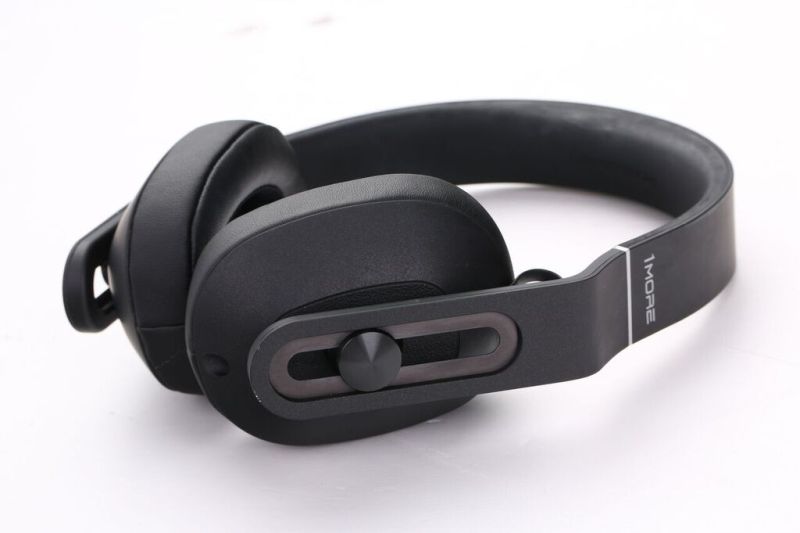
The MK801 over ear sealed headphones ($79) offer a surprising level of sound quality for their price. Bass is definitely pumped up a little, and the highs are a little rolled off, the sound apparently tailored towards modern music and probably compressed files or streaming, but still, they get so much right that they have become my go-to travel and gym headphones, playing with either my QP1 or my older iPod Classic/Total Bithead combo. One really nice feature not often seen at this price point is the easily removable cable that uses standard a 3.5 mm stereo connector. Reasonably comfortable and offering pretty good isolation, even if not quite enough for a long trans-continental plane flight. For those looking for an over ear, closed back headphone (available in red or black) for well under the $100 mark, they are my top recommendation.
Review coming soon...
Robert H. Levi
Grado Statement Series 2 Phono Cartridge
Retail: $3500
After another three months of reference listening and comparing and after listening to rare Classic Records lacquers cut by Bernie Grundman, I am ready to swallow the kool aid. The new Grado Statement Series 2 is THE BEST cartridge I have ever auditioned and a breakthrough design among all cartridges I know of in the here and now price be damned.
At $3500, it is not inexpensive, but a radical top value for audiophiles who want the very closest phono performance, when compared to master tape, they can enjoy in their home. The V2's lack of every kind of distortion that plagues all other phono cartridges I have heard or auditioned is plainly obvious. The lifelike clarity and nuance of this cartridge must be heard to be appreciated.
Handbuilt in Brooklyn by John Grado, himself, and one other senior technician in tiny batches, you may have to wait a bit for yours. I would buy now before the price goes sky high with demand. This new one is a fantastic improvement over the Statement V1 just two years ago. Tracks all LPs like it runs on rails. The Grado Statement Series 2 is the amazing "everyman" reference phono cartridge for anyone serious about the best of the best LP sound in the home.
Read more HERE
Audio Desk Systeme Glass, Vinyl Cleaner Pro
Retail: $3800
I reviewed the original unit upon release about three years ago and have now spent some time with the new PRO model which sells for the same price, thanks to the strong dollar. The new unit produces results about the same as the original, but faster with superior operation and added features. I would consult with uber friendly Robert Stein about replacing your current non PRO model.
I still find that one cleaning cycle is very good, two cycles is perfection for LP cleaning with no muss or fuss. The PRO is half as noisy as the original and works perfectly in less time... about 5 minutes for one complete cycle compared to 6 with the original. It has a nifty new feature allowing you to dry only your LP without washing. This can be a very useful feature! The mechanism, motor, fans and gears are all smoother sounding and higher rated for longer heavy duty life. It is even easier to empty after cleaning the requisite 100 albums. It now comes in cool colors, red, white, and black for a slight extra charge...I chose red to review. Red works great!
I have seen it on line in the standard gray color for as low as $3800 so shop around. I would make sure the unit you buy says PRO. The PRO comes with a 2 year warranty...no limit on LPs washed.
The secret sauces of the ultrasonic action, mildly detergent custom chemical in the distilled water, and the gentle brushing of four precision brushes make this machine unique among all others available today and is state of the art. The
Audio Desk Systeme Glass, Vinyl Cleaner Pro is the one to buy if you love LP collecting. I have never made a safer recommendation.
Review coming soon...
Brian Moura
Live Stereo DSD 5.6 MHz Streaming PrimeSeat & Blue Coast Music
We're fortunate to be living in a time when music is now being made available in truly high resolution Stereo and Multichannel audio. This includes high resolution music downloads up to Direct Stream Digital (DSD) 11.2MHz (256 times the bit rate of Stereo CD discs. Yet when it comes to streaming music, listeners are asked to sacrifice high resolution quality for streaming at CD or lower bit rates (16-bit, 44khz or lower) as a requirement to experience streaming audio. Or you had to do that until now.
PrimeSeat, a joint project from the Internet Institute of Japan (IIJ), Sony and Korg, set out to bring truly high resolution Stereo DSD 5.6 MHz Audio to listeners. The project started in Japan with software that initially worked on just a few Digital to Analog Converters (DACs) from Sony and Korg—and later expanded to supporting all DACs with music that was made available on-demand and later broadcast live over the Internet.
PrimeSeat isn't your standard low resolution music streaming service. No, this is real live Stereo DSD 5.6MHz Audio streamed on-demand and then from live concerts over the Internet to your home audio system! After listening to low resolution streaming audio systems, lossy compression and encoding systems and networks, the promise of PrimeSeat's truly high resolution audio streaming seemed too good to be true. And yet, it works and sounds excellent.
To introduce the service in the United States, PrimeSeat partnered with Cookie Marenco's Blue Coast Music for two concerts. The first was recorded at a nightclub in San Rafael, California and then made available on-demand in DSD 5.6MHz Stereo with PrimeSeat. Then a second performance featured singer Jenna Mammina and guitarist Alex de Grassi captured and broadcast live in DSD 5.6MHz Stereo from Skywalker Studios in Marin County, California using MR-2000 converters from Korg (live DSD 5.6MHz Stereo broadcast) and a Merging Technologies HAPI converter on loan from David Robinson at Positive Feedback (a separate feed that provided DSD 11.2MHz Stereo downloads after the broadcast from Blue Coast Music).
Positive Feedback was at the Live DSD Concert Broadcast (see linked story below) and witnessed history being made. We applaud the work of PrimeSeat and Blue Coast Music for bringing live, truly high resolution DSD 5.6MHz Stereo Audio, uncompressed and at full bandwidth, to music listeners and fans worldwide. This is a truly ground breaking achievement and one that earns PrimeSeat and Blue Coast Music a Writer's Choice Award.
Read more HERE
Debussy, Preludes Books I and II by Ilya Itin in DSD 256, Wave Kinetics Records and 5/4 Productions
DSD 256 (also known as Quad DSD and DSD 11.2MHz) was initially used in the recording studio for DSD recordings and as an upsampling mode for listeners at home. When Yarlung Records transferred 20 of their Analog Master Tapes to DSD 256 music downloads for sale via the NativeDSD web store, it was suddenly a music release format.
Last year Jonathan Tinn from Wave Kinetics announced that he was planning to record two albums of Debussy's Preludes with pianist Ilya Itin in both Analog (for release on Vinyl LP and Analog Tape) and DSD 256 (for release as DSD Music Downloads). To add to the news, Tinn hired producer Thom Moore and recording engineer Rob Friedrich, formerly from Telarc and now at 5/4 Productions, to handle the recording. Now this had all the signs of a very high quality and anticipated release.
At this year's edition of The Show at the Hotel Irvine, the final version of the two albums—Debussy, Preludes Books I and II by pianist Itin debuted and then were released as Stereo DSD 256 music downloads from Acoustic Sounds' Super HiRez and NativeDSD Music. I should add that they are also albums where there is no SACD edition, DSD Downloads will be your ticket to hearing them in DSD 256 as recorded.
The albums in DSD 256 feature an ideal combination of excellent musical performances by Ilya Itin, superb production and engineering by Thom Moore and Rob Friedrich and some of the most natural sounding piano performances you will hear. Reviewer Zsolt Bognar from Living The Classical Life in Europe said, "I don't think I shall soon hear a greater performance of Debussy in my life."
After hearing music from the two albums at The Show, I was anxious to get my hands on them for a listen on the Merging Technologies NADAC DAC in my home system. As I had experienced at The Show, these albums are indeed superb examples of what a well recorded album of Debussy's music for piano can and should sound like. Kudos to everyone involved in this project—and special thanks to Jonathan Tinn and Wave Kinetics Records' partner David Rawn, for bringing this project to fruition. If you like the music of Debussy or classical piano, these two albums are must have additions to your collection. For me, this is easily one of my Writer's Choice Award Winners for 2016.
Read more HERE
Model One Headphone System, Sonoma Acoustics & Warwick Audio Technologies
Audio Designer Dan Anagnos got his start at Polk Audio as a Loudspeaker Designer and over the years has worked in Audio R&D at audio companies including Sony, D&M Holdings (Denon and Marantz), and Boston Acoustics to name a few. He gained fame during his time at Sony for the development of the Sony ES Series SS-M9ED Loudspeakers which were used in recording and mastering studios in the production of high resolution SACD and DSD releases as well as in the audiophile market.
These days, Anagnos is working with Warwick Technologies to bring their High Precision Electrostatic Laminate (HPEL) transducer to the headphone market. Part of this project involved the design of a new high resolution audio headphone system, the Model One, with a team at Sonoma Acoustics which includes David Kawakami, Dr. Andrew Demery, and Gus Skinas from the original Super Audio CD team. These audio experts know high resolution and high quality audio and a headphone system developed by them generated immediate interest in the high-end audio and headphone markets during the year.
At the recent Rocky Mountain Audio Fest in Denver, many new headphones debuted at prices up to $50,000! But the one that caught the attention and raves of many show attendees and industry experts was the Model One Headphone system designed by Anagnos and the Sonoma Acoustics team. The Model One handles PCM music up to 32-bit, 384kHz and DSD music up to 5.6 MHz (DSD 128).
Featuring a unique HPEL transducer, a combination electrostatic energizer, DAC and power supply and wiring developed with Straight Wire, this is a new headphone system that calls for a serious audition. The Model One is unusually light and comfortable for a high-end headphone. It provides excellent definition, plenty of micro-details, and top notch sound quality at a system price of $4999. This is very competitive at the high-end of the headphone market where the top electrostatic and planar headphones sell for $3000 and up with a comparable amount being spent on a quality headphone amp and perhaps a DAC as well. For its performance, comfort and excellent sound quality, the Sonoma Acoustics Model One Headphone System earns a Writer's Choice award.
Read more HERE
Marshall Nack
Stage III Concepts Medusa Speaker Cable
Retail: $18,500/2 meter pair
I recall my initial befuddlement when the Stage III Concepts Medusa Speaker Cable came in where I summed up my impressions with a pair of conundrums:
Brain Teaser #1: When we talk about dynamic responsiveness it's easy to understand how a power cable can factor in; the first thing a component sees is the AC from the wall and the conveyer of the juice can be a very limiting factor. OK, but, how can a speaker cable impact dynamics? Hmm. Signal cables affect things like timbre and tone.
Yet, that is what occurred when this Stage III Medusa cable was installed. These wires have emphatic attacks and a jump factor.
It has to do with the inverse relationship between RFI and dynamic range, such that reducing the one increases the other. When you think about it, it's obvious that as noise is removed, soft sounds which had been below awareness begin to emerge and dynamic range is extended on the low end. But this is not so easy to implement. To make a dent in RFI, heavy shielding is required and that typically results in over-damped, closed-in sound. Stage III claims to be the only manufacturer to come up with a solution employing heavy shielding to clobber RFI, while retaining openness.
Brain Teaser #2: Some things in life are finite, like the dimensions of my listening space, a 12' W x 8' H x 32' L living room; what many consider mid-size. I am allocated the front third for gear; the speakers are set up on the short wall. The implication of those room measurements is limited stage width and plenty of depth.
So, on first listening the morning after installing the Medusa, why does the soundstage appear to have expanded in three dimensions? I'm playing the same tune I did yesterday, but the instruments are bigger, more massive, and somehow they are not cramped. The illusion sure has morphed.
With the introduction of the Stage III Concepts Medusa Speaker Cable something big and fundamental changes. The Medusa is part of a line of cables from a boutique manufacturer that deserves broader recognition.
Read more HERE
Robert Neill
Rachel Podger, Biber's Rosary Sonatas. Channel Classics.
Podger's performance of the Bieber sonatas is predictably more expressive and sensual than most others;' but it is absolutely Bieber, perhaps more so. Eloquently lyric utterance mounted on late renaissance/early baroque formal scaffolding. This is music of the generation of Buxtehude and Purcell, and it is reassuring to hear Podger both acceding to the period's stylistic demands and somehow going beyond them. As I've written here before, Podger hears composer perfectly and then gives them her singular quotient of additional emotional energy. That said, there is an ease to her playing here that strikes us as the perfect response to this composer and his subject matter. Ease mixed with rapture!
Read more HERE
The Twenty Fifth Hour: The Music of Thomas Ades. Signum Classics.
Adès focuses in tighter than his contemporary, Krzysztof Penderecki—he is closer to the bone, the nerves, even possibly the soul, capturing an aspect of our contemporary sensibility that no one else does. I find his music essential to my well-being. He gives close harmonies and subtle dissonances a sometimes riveting, sometimes poignant quality. Melodic material hides in thickets. In a fascinating book-long "conversation" with music critic/scholar Tom Service, Thomas Adès: Full of Noises (Farrar Straus, 2012), he is as informative as a composer can be on his music and its relation to that of others, dwelling mainly on music's own power to lead composers in various directions. He aims, with both the world and the history of music in his head, to get as close to the truth of how it is to live now.
Read more HERE
Benjamin Britten, Cello Suites, Quirine Viersen. Globe
The latest edition of Britten's Cello Suites is by cellist Quirine Viersen is a very impressive one. She plays this powerful, expressive music with great force—it the most human performance I've heard. The Suites feel almost spoken—bruskly, thoughtfully, sometimes almost whimsically. There is a freedom to her Britten I've not heard before: it's both refreshing and revelatory. This is the first recording of the Suites I've heard played by a woman. I suspect this something to do with its originality and persuasiveness.
Mark Pearson
Music Hall MMF-9.3 Turntable
Retail: $2300
The Music Hall MMF-9.3 wins my vote for Writer's Choice Awards for 2016 in the analog category. What Roy Hall has brought to the marketplace for $2300 which includes the table, carbon fiber arm, and Goldring MC cartridge is simply astonishing in terms of the sound quality it delivers. Diminutive in size, but huge in sound and smiles. If this table doesn't get your toes tapping, you need to see your audiologist or your podiatrist because something is amiss.
Read more HERE
PS Audio DirectStream Junior DAC
Retail: $3999
The PS Audio DirectStream Junior DAC gets my Writer's Choice vote for digital audio components. This is a beautiful looking and sounding DAC with 6 digital inputs for optimum flexibility, as well as being software upgradable due to the use of Field Programmable Gate Array chips. All inputs are upsampled to DSD 10x and it made all of the PCM files I played through it sound better. Native DSD files sound spectacular.
Read more HERE
Gregory Petan
GoldenEar SuperSub XXL Subwoofer
Retail: $1999
If you are interested in having some fun and extend the low frequencies of your system to subterranean depths, look no further than the GoldenEar SuperSub XXL Subwoofers. Built to a very high level of fit and finish the $1999 SuperSub XXL subwoofer is super easy to integrate, undeniable in its capability and adds a level of wow factor to the sound that enhances all aspects of both movies and music. The sound takes on a sense of majesty and increases the sense of both space and scale to all that passes through it.
Read more HERE
Scott Robertson
Parasound Halo Integrated
Retail: $2495
Parasound's Halo Integrated 2.1 channel integrated amplifier is a force to be reckoned with. Not only is the Halo Integrated an integrated amplifier, it also boasts a high quality ESS Sabre32 Reference DAC supporting PCM up to 384kHz/32-bit, DSD64, DSD128, DSD256, and DoP DSD high definition audio, as well as a phonostage for MM and MC and a dedicated high current headphone amplifier. The Halo Integrated offers 5 analog input channels (including a balanced XLR input channel, XLR line-level output, and XLR bass channel output), phono, optical, digital coax, and a 3.5mm front panel auxiliary input.
The power amplifier section is a class A/AB John Curl design, and it delivers in spades. The Halo Integrated drove my low impedance, current hungry Magnepan 3.7i mains and dual Magnepan DWM woofer panels with authority. Any integrated amp that can readily drive high-current loads while providing clear, clean, and spacious sound for under $2500 is a winner. But wait, that's not all.
The high resolution DAC places the Halo Integrated firmly in the 'best sound for the dollar' category. Parasound offers high quality ASIO and WASAPI drivers for PCs (Mac OS does not require additional drivers), and the ESS Sabre32 Reference DAC delivers as wonderfully as the power amplifier. The Parasound Halo Integrated provides an amazing value proposition and is well deserving of a PF award.
Review coming soon...
Dean Seislove
ampsandsound Kenzie Headphone Amplifier
Retail: $1500
I listened to a ton of headphone amplifiers this year, and this rustic looking character of iron, glass, and wood is easily one of the best that I've heard. Unabashedly old school in looks and sound, it does so many things right, even the Vulcan diehards who hate anything warm or tonally rich have to give the Kenzie its due. Only the Cavalli Audio Liquid Tungsten prototype pleased me more, and that model will be much more costly, even when available. The Kenzie is a sweet talkin', smooth movin' performer, and well worth this year's award.
Read more HERE
Eclipse TD508 Mk3 Loudspeakers
Retail: $1490
This was a tougher choice, in that I know that not everyone will love the TD508's. These speakers force the listener to abandon the comfort of a traditional appearance and sound. For a hobby that talks innovation but buys status quo, the TD508s might be too much of a leap for some. Too bad, too, because the TD508s play music in a startling tactile way. Read the review for more, but know that these speakers deliver a sound that can be as real as they are unique. I still love traditional box speakers, but the TD508s reveal the limitations of a traditional design while simultaneously proving the benefits of a new approach.
Read more HERE
WyWires Platinum Series Cables
Platinum USB A/B: Priced from $899, Platinum Analog Interconnect Cables: Priced from $1799, Platinum Speaker Cables: Priced from $2759, Platinum Power Cord: Priced from $899
My product award goes to the WyWires Platinum series with one caveat: it's an award for the complete set. The Platinum series continues the strengths of WyWires cables—speed, resolution, and tonal accuracy—while making inroads to provide more midrange warmth than in the past. Individually, each cable works as it should, but it is when all cables are employed that one truly hears an audio system at its most coherent and expressive. When acting in concert as designed, the Platinum series provides a substantial improvement for systems only requiring the virtues of transparency. I believe that this is my first product award for cables, but the full system sound was truly enlightening.
Read more HERE
Michael Wechsberg
Backert Labs Rhumba 1.1 Line Stage
Introductory Retail: $2995
The most engaging piece of electronics I heard during the 2016 review period was the Backert Labs Rhumba 1.1 Line Stage. This little tube beauty achieves about 90% of the performance of its costlier brother, the Rhythm 1.1 reviewed in 2015, for less than half the price. Both line stages are standouts for their speed, dynamics, pace, and definition. Designer Bob Backert is brilliant and his preamps sport numerous innovative design features. The Rhumba is the perfect line stage for those who favor small scale music, like jazz, vocalists, small ensembles and so on, but it's no slouch on the big stuff either. Tonally true without the exaggerated warmth of some other tube line stage designs. The Rhumba has both single-ended and balanced inputs and outputs whereas the more expensive Rhythm is single-ended only. The tubes are accessible through a removable Plexiglas window on the top of the unit for easy tube rolling although I didn't bother as it sounded so good with the stock tubes. I did discover some improvements by adding a high-end power cord. By all means if you have the chance to audition the Rhumba 1.1 you should do so. I predict you will like what you hear.
Read more HERE
ATC SCM19AT Active Tower Speaker System
Retail $9999
Another winner I got to play with this year is the ATC SCM19AT active tower loudspeakers. I usually enjoy powered speakers because of their ability to cast a rock solid, stable image with great punch and dynamics. These ATCs are standouts beyond these properties because of their extended response and engaging tonality. ATC has done a great job with their proprietary drivers, and they have learned just about everything anyone needs to know about integrating amplifiers with speakers in the same cabinet. Each speaker carries two amplifiers adding up to 182-watts per channel, but they actually sound more powerful than that. These speakers can play very loud without losing any transparency or making any ugly noises. On the soft side, they purely transmit low level details and microdynamics. They are spooky-real on vocal music, especially when recorded in a live environment, but there was nothing musical they couldn't handle. ATC also sells these into the home theater market where I'm sure their midrange intelligibility and punchy dynamics makes them an easy sell. Audiophiles tend to shun active speakers, but if you haven't noticed, more and more of them are coming on the market. You can get great value for the money and they leave little to be desired in audio performance. I encourage you to give these ATCs a listen. You're going to like them.
Read more HERE
Robert S. Youman
Pass Labs X350.8 Stereo Amplifier
Retail: $14,200
The X350.8 Stereo Amplifier is a superb example of the Pass Labs commitment to trickle down product technology and development—in this case what was learned from the flagship Xs series. The X350.8 is a fully balanced Class A/B design rated at 350 watts into 8 ohms and doubles into 700 watts at 4 ohms. At a shipping weight of 145 pounds, the X350.8 is an absolute monster in terms of both size and performance.
Loyal fans of the Pass Labs product line are always interested in the design changes that occur as specific models continue to evolve. Like the X350.5, the X350.8 is still based on the patented Supersymmetry circuit originally developed in the early 1990s. This circuit has now been enhanced with the more exotic and powerful NOS (new old stock) Toshiba JFETs. Though manufactured discontinued, Pass Labs has managed to purchase enough for all future manufacturing and support needs.
Other improvements include much larger toroidal transformers and power supplies, more storage capacitance, more precise regulated voltages and and larger heat sinks. A chassis ground terminal is also included which came in mighty handy for the grounding needs of my two REL subwoofer high level Neutrik cable connections.
Aesthetic changes include a new faceplate, current meter, transport handles and Furutech binding posts. The later provides torque limiting tear drop adjustment knobs with much improved ergonomics and stability. As stated in several earlier reviews, the industrial design of the Point 8 series casework took some time to grow on me, but now I greatly prefer it over the Point 5 series.
One of the most attractive things about the X350.5 is that it can be partnered successfully with a wide range of preamps—solid-state, tube and even digital. One of my favorite pairings was with the new Audio Research Reference 6 preamplifier which gives you a nice combination of both solid state and tube performance.
Highs have a rich sonic texture with layers and layers of inner density and detail. Mids are addictively lush with a wealth of bloom and texture. Bass is world class with tremendous depth and impact. Extension at both ends is quite impressive with plenty of jump factor and transient speed. Overall, a much more refined and dynamic step closer to the real thing when compared to the legacy Pass Labs Point 5 lineup.
If seeking out the best in solid-state amplification, the X350.8 will provide you with a strong foundation that can be the centerpiece of your system for years to come. By far, my favorite single chassis stereo amplifier component of the year!
Read more HERE
Devialet 800 Integrated Amplifier
Retail: $29,995
The Devialet 800 Integrated Amplifier is a two chassis design with one module dedicated for each channel. Devialet utilizes their patented ADH (Analog Digital Hybrid) amplification core which includes a circuit design implementing both Class A and Class D in parallel. Devialet claims that the musicality of the Class A (voltage control) and efficiency of the class D (current output) takes the best of both circuit topologies.
Devialet supports an impressive list of features from the basic 800 hardware and software platform. To name just a few, this includes an extremely sophisticated phono section, optional equalization curve support for LP playback (RIAA, Columbia, EMI, and several more), dual subwoofer outputs and crossover flexibility, and an online configuration tool that will allow you to set up or turn off all analog and digital inputs and outputs. PCM is supported up to 24-bit /192kHz and DSD64 is supported via DoP (DSD over PCM)
The most impressive feature just might be the unique Devialet application called SAM (Speaker Active Matching). This software is specific to each speaker brand and model and is designed to address time delays and frequency response errors for frequencies under 200Hz. As just one example, SAM had an immediate and astonishing impact on my Sonus Faber Stradivari speakers. SAM is now available for well over 750 speakers and the list is growing daily.
From a performance perspective, I frequently find myself saying that the Devialet 800 is "different". This is not your father's tube or solid state amplifier—you need to throw away your standard benchmarks and have a different mindset when evaluating.
Bass performance is as good as any amplifier that has visited my listening room. Extremely tight and detailed with exceptional power and slam. More neutral than not, mids and highs are silky smooth with plenty of jump factor and visceral excitement.
Again, though I use the word "different", there is a clear and positive emotional connection when I listen to music through the Devialet 800. The end result is still extremely rewarding and quite moving.
Devialet is onto something big with this integrated design and vast feature set. I am looking forward to my time later this year with the recently announced Pro 1000 Integrated Amplifier. The early scuttlebutt is that Devialet has redesigned its power supply and Class A/D circuitry across the entire product line and the end result is something very special. Please stay tuned!
Read more HERE
Aurender N-10 Music Server
Retail: $7999
The Aurender N-10 Music Server was suggested by several very knowledgeable friends and readers as the ideal way to take my system to the next level for computer audio. Like many new to the game, as I ramp up and learn the ropes of all things digital, I needed something that was basically turn key and highly reliable. It did not hurt that the sound performance and user interface can compete with virtually anything currently available in the marketplace.
When matched up with either the Devialet 800 or the Playback Designs MPS-5 CD/SACD/DAC, the setup was basically painless. Though I was assigned a specific Aurender contact for technical support, I was able to get everything up and running on the first try with just a quick 30-minute tutorial from a local friend and nary a phone call.
The N-10 comes with 4TB of (2TBx2) hard disk drives and one 240GB solid-state drive cache for playback. The solid-state cache helps to eliminate electrical noise and vibration that can impact sound performance. Dual linear power supplies and robust shielding are employed which many feel is more in line with today's audiophile design standards.
The N-10 also provides a wide range of S/PDIF digital outputs (AES/EBU, BNC, coaxial, and optical) and one dedicated USB Class 2.0 output. For network connectivity, streaming, and upgrades, an Ethernet port and two USB 2.0 data ports are also included. Compatible formats that are supported by the N-10 include DSD (DSF, DFF), WAV, FLAC, AIFF, ALAC, and M4A.
Using the new Aurender Smart Copy feature, I copied several high resolution files from my QNAP NAS and WD hard drives to the N-10 without a hitch. This included a range of various PCM and DSD files. I know that many feel that some music servers and DACs can sound better for DSD and some better for PCM. I am not gonna get into a DSD versus PCM comparison here. All I can say is that both formats sounded absolutely wonderful through the N-10, plenty of detail without edge and a sense of proper body and weight that few digital components can provide. Unlike several contenders, the Aurender N-10 shines with virtually any format.
Lastly, the Aurender Conductor app is a superb example of how competitive the industry is and how quickly remote application control and related features have evolved. As a user interface, I feel strongly that the Conductor app is one of the best out there and has set a new standard for music servers. Everything is beautifully laid out and menu choices can be made with logical and efficient access. With the Aurender application at your fingertips, you will be hard pressed to ever leave your listening seat for music selection or better sound quality.
Read more HERE
John Zurek
Audioquest Jitterbug
Retail: $49
Shouldn't all audio gear be very expensive, with the quality of sound directly proportional to the price? That old adage may still be generally true, but in many cases a new era of value is making its way into the high-end. We are seeing more reasonably priced audio components of all persuasions entering the market, and in my opinion that's a good thing. Exorbitant prices of so much audio gear is keeping many potential audiophiles—especially young people—out of the game.
The typical product you'll see in Positive Feedback's yearly awards are speakers, amplifiers, cables etc.; many of which are quite expensive. I'm going in the other direction. At $49 retail the Audioquest Jitterbug is an accessory that is so reasonably priced it's almost free in audiophile dollars. Audioquest calls the JitterBug a USB Data & Power Noise Filter, with Dual Discrete Noise-Dissipation Circuits and says it reduces the noise and ringing that plague both the data and power lines of USB ports, measurably reduces jitter and packet errors, and improves dynamic contrast, warmth, and resolution.
When I first tried the Audioquest Jitterbug in my system—which includes a Mac Mini (2.3 GHZ Intel quad core i7, 1TB SSD, 16G RAM, a 2TB Thunderbolt RAID, and the YFS custom power supply), a Mytek Stereo 192 DAC, and a DanaCable USB cable—I was very pleasantly surprised.
From the original review: The entire soundstage seemed newly energized. I was hearing the details I heard before, but expanded in a spatial realm. And instead of being implied, they were evident in a new way. The air around the notes came alive with sparkle. Not an increase in high frequency energy, but a more (I hate to say it) analog-like rendering. Before the 'Bug I thought I was hearing a great (it wasn't bad) 3D presentation. With the JitterBug every square inch of the stage was mapped out with notes and the air around the notes. The music felt more alive. After basking in the new found glow, I began to notice other effects. The midrange, especially evident in vocals, had a cleaner, more inviting texture, as if I could feel a little more of the singer's energy. The overall presentation was smoother, easier to listen to, and less fatiguing. Quite an improvement, and certainly more than I was hoping for.
Now that many months have passed how did the Jitterbug stack up? It's been resident in the system ever since the review. When I removed it I was a little more disappointed than I had anticipated. My 3D presentation seemed more like 2.5D. The sparkle and air around the notes were diminished, and the infectious liveliness was reduced. Was it terrible? No, but the magic that I'd become accustomed to was missing for sure.
By now you can guess that I will not be using my computer-based digital source without at least one audioquest jitterbug. You can get even more performance if you use a second jitterbug plugged into any unused USB port.
This incredible change from a $49 accessory? Hard to believe. Really hard to believe! The bottom line is if you using computer or any other device as a music source that includes USB ports, get yourself an Audioquest Jitterbug or two and you'll be much happier with your music.
Kudos to Audioquest for developing this very clever little gem, I look forward to listening to their other offerings in affordable price ranges.
Read more HERE




